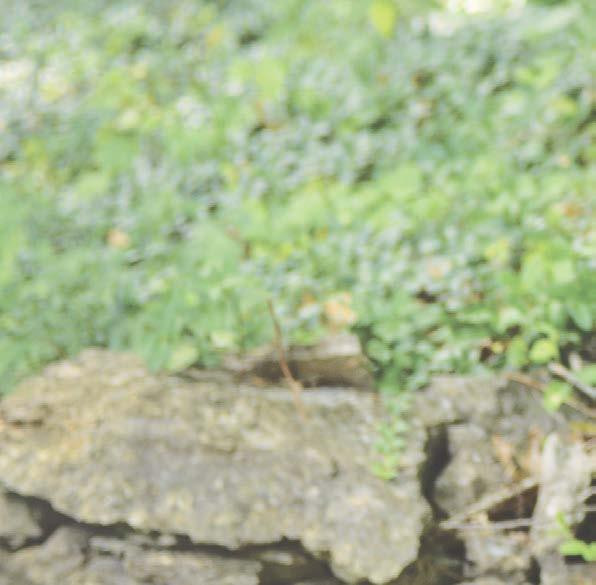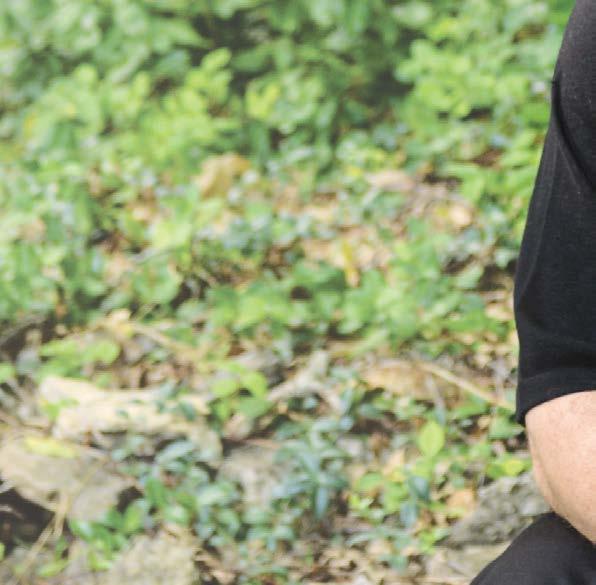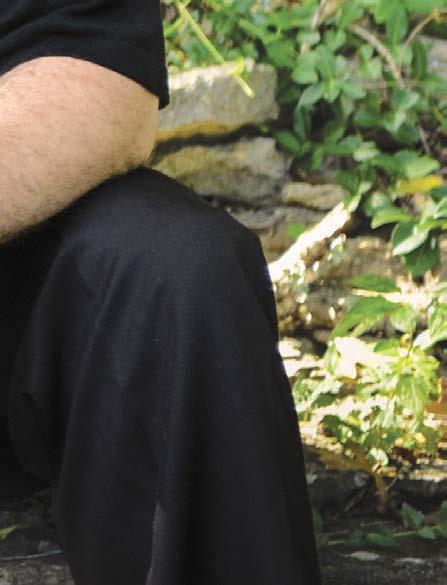




Membership Meeting March 4 at 6 p.m. Zoom and at Local 257
Membership Meeting Wednesday, June 11 Zoom and at Local 257


Details on the upcoming member meeting Wednesday, June 11, on Zoom, and also in person. Local reports from the president and secretarytreasurer, and other important information.
OF THE LOCAL Dave Pomeroy gives details on changes in recording contract procedures, successful TV and Opry negotiations, and updates on Lower Broadway, airline issues and more.
THE NOTES S ecretary-Treasurer Will Barrow discusses recent major repairs at the local.
Dave Pomeroy makes an appearance before Congress on behalf of musicians and intellectual property rights, and a new contract will bring a pay increase for Opry musicians.
comings and goings of Local 257 members.
STORY: BUDDY CANNON Warren Denney sits down with Buddy Cannon to unravel his serendipitous journey from bassist, to celebrated songwriter, to producer for Willie Nelson, Kenny Chesney, and a host of other artists.
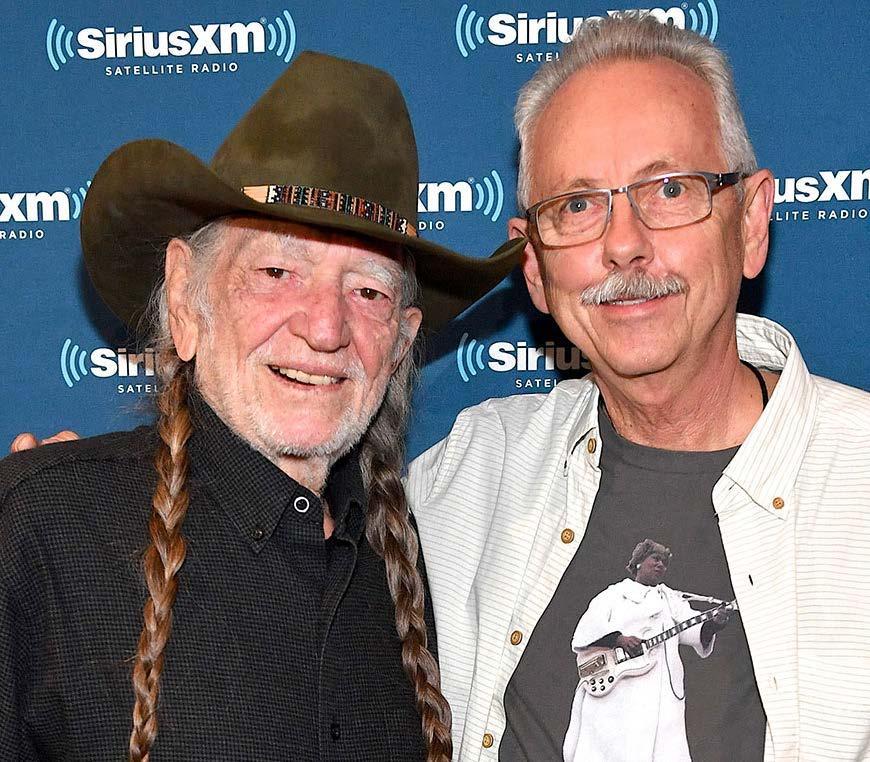

NOTES We bid farewell to Billy Ed Wheeler, Austin Bealmear, Dennis Byron, Gary Armstrong, Eddie Seals, Lonnie Hoppers, Russell Elrod, and Rick Harper.


PUBLISHER
EDITOR
MANAGING EDITOR
ASSISTANT EDITOR
CONTRIBUTING WRITERS
CONTRIBUTING PHOTOGRAPHERS
ART DIRECTION
WEB ADMINISTRATOR AD SALES
LOCAL 257 OFFICERS PRESIDENT
SECRETARY-TREASURER
EXECUTIVE BOARD
Dave Pomeroy
Will Barrow
Kathy Osborne
Leslie Barr
Warren Denney
Melinda Whitley
Roy Montana
Kathy Osborne
Dave Pomeroy
Dave Pomeroy
Leslie Barr
Lisa Dunn Design
Kathy Osborne
Leslie Barr 615-244-9514
Dave Pomeroy
Will Barrow
Jerry Kimbrough
Alison Prestwood
Biff Watson
Laura Ross
Rich Eckhardt
Tom Wild
Jonathan Yudkin
EXECUTIVE BOARD ALTERNATES
HEARING BOARD
Paul Ossola
Casey Brefka
Michele Voan Capps
Tiger Fitzhugh
Teresa Hargrove
Kent Goodson
Sarah Martin McConnell
Dave Moody
Ellen Angelico
TRUSTEES
SERGEANT AT ARMS
NASHVILLE SYMPHONY STEWARD
OFFICE MANAGER
ELECTRONIC MEDIA
SERVICES DIRECTOR
RECORDING/ELECTRONIC MEDIA
Bruce Radek
Biff Watson
Steve Tveit
Melinda Whitley
Savannah Ritchie
Billy Lynn
Paige Conners
William Sansbury
Cassandra Tormes
Alona Meek
DIRECTOR, LIVE/TOURING DEPT. AND MPTF COORDINATOR
MEMBERSHIP
Leslie Barr
Michael Minton
The next Local 257 General Membership Meeting is scheduled for Wednesday, June 11, on Zoom and at the local. Doors will open at 5:30 p.m. and the meeting will start promptly at 6 p.m. There are no bylaw amendments on the agenda. There will be Officer’s reports, and open discussion on issues of interest
Please attend and get involved in the business of your local.
NASHVILLE MUSICIANS ASSOCIATION
AFM LOCAL 257, AFL-CIO MINUTES OF THE 1ST QUARTER HYBRID ZOOM/LIVE MEMBERSHIP MEETING MARCH 4, 2025 6:00 P.M.
PRESENT: Regina McCrary, Jeffrey Clemens, Jay Hefner, Sunny Dada, Jason Howard, Joe Hamm, Tom Shedd, Tom Van Shaik, Luis Espaillat, Ryan Jennings, Yamil Conga, John Mattick, Damon Hope, Matt Davich
EXECUTIVE BOARD PRESENT: Jonathan Yudkin, Paul Ossola, Rich Eckhardt, Tom Wild, Biff Watson Absent: Alison Prestwood, Laura Ross, Casey Brefka
HEARING BOARD PRESENT: Sarah Martin McConnell, Ellen Angelico, Teresa Hargrove, Kent Goodson, Michele Capps, Tiger Fitzhugh Absent: Dave Moody
PARLIAMENTARIAN: Bill Wiggins
SERGEANT AT ARMS: Steve Tveit
OFFICERS PRESENT: Dave Pomeroy (DP), Will Barrow (WB)
DP CALLED MEETING TO ORDER AT: 6:07 p.m.
PRESIDENT’S REPORT:
• Opry negotiations yielded a new three-year contract, in which the staff band and guest musicians all got raises and pay increases for chart writing and rehearsals.
• TV negotiations in NYC resulted in a good deal with the networks, including AI compensation.
• We are reaching out to TSA and the airlines to work on issues members are having with instruments being damaged when they fly.
• Our union was gifted $25,000 from the estate of Jerry Bob Abbott, former owner of Abtrax studio, and father of members of the group Pantera.
• The number of Metropolis garages offering members a discount has expanded to 23. There is a new QR code, effective in April.
• We are still having issues with time cards not being filled out completely, which session leaders are responsible for, which slows down the payment process.
• We will going to be bringing the process of turning time cards into B-Form contracts in house. Details forthcoming soon. @2025 Nashville Musicians Association P.O. Box 120399, Nashville
REPORT ON MEMBERSHIP, 1ST QUARTER (generated 03/04/2025)
NEW MEMBERS: 55
REINSTATED: 203
TOTAL ADDITIONS: 258
SUSPENDED: 218
EXPELLED: 0
RESIGNED: 18
DECEASED: 10
TOTAL REDUCTIONS: 246
ACTIVE LIFE MEMBERS: 668
ACTIVE REGULAR MEMBERS: 1075
PAYMENT PLAN MEMBERS; 60
TOTAL MEMBERSHIP: 1805
MEMBER DEATHS YTD: 4
Thursday, June 19
Friday, July 4

1. Wednesday night (and other) monthy events, 7 to 9 p.m.
A. Jazz Night: Joe Gross quartet March 5, Roy Agee quartet April 2
B. World Music Night: Yeli Ensemble March 12 from Mali to Music City, journey of the n’goni (ancestor of the banjo)
C. Steve Leslie: Nashville Songwriters class March 19, great songwriters of the ‘90s (continued)
D. Songwriter-Musician Workshop with Dave Abdo and band: March 26
E. Soul Night: April 23: Jannelle Means, Michael Dunham.
2. Building issues
A. Electric panels: Seven panels to be replaced. one is finished, waiting on parts for the rest
B. HVAC: One AC unit is broken, and another needs replacing by spring or in the near future. Lowest estimate so far $38,000 for both units. Getting new estimates for one unit, and for both.
C. Urinal in men’s room needs to be replaced, as does the carpeting in the offices.
D. We’d like to figure out a way to raise money to help pay for the cost of repairs being done to the building, and those to come, without doing an assessment to members.
DISCUSSION
Kent Goodson described an incident on a road gig where his instrument wasn’t properly protected and possibly damaged, and suggested members have a copy of the law protecting instruments when flying with them. A good discussion of the language of the FAA law and current issues with scanners and gate agents ensued.
MSC TO ADJOURN
Meeting adjourned at 7:05 p.m.
NASHVILLE MUSICIANS ASSOCIATION
AFM LOCAL 257, AFL-CIO MINUTES OF THE EXECUTIVE BOARD ZOOM MEETING MARCH 25, 2024
PRESENT: Will Barrow (WB), Dave Pomeroy (DP), Rich Eckhardt (RE), Laura Ross (LR), Jerry Kimbrough (JK), Jonathan Yudkin (JY), Paul Ossola (PO), Biff Watson (BW)
ABSENT: Casey Brefka, Alison Prestwood, Tom Wild
DP called the meeting to order at 9:10 a.m.
AGENDA ITEMS/UPDATES:
• We are restarting our association with American Income Life, offering additional benefits to members at no cost, with an option to purchase additional coverage.
• Work on replacing our building’s seven electric panels is underway, and is due to be completed next month.
• We received a $25,000 donation from the estate of former member Jerry Bob Abbott, owner of Abtrax studio, and father of members of the group Pantera.
• We have successfully negotiated new contracts with the Opry and General Jackson that will increase pay for our members.
DISCUSSION:
Potential changes in office staff and personnel were discussed, to be continued. LR requested we have more financial information available at board meetings, and it was agreed that information will be available going forward.
. MSC TO ADJOURN.
Meeting adjourned at 10:05 a.m.
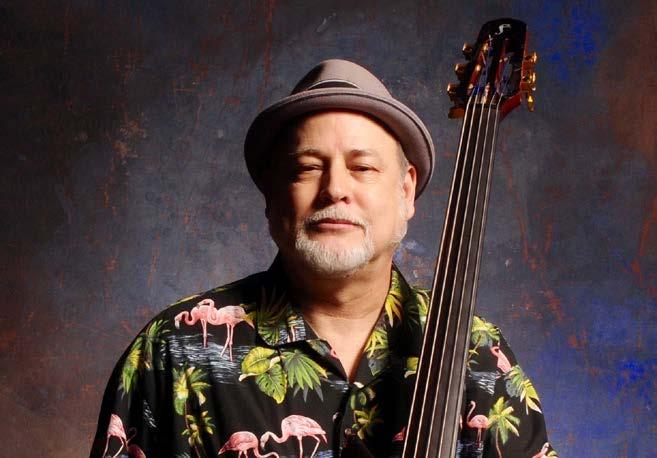
BY DAVE POMEROY
It’s already been an eventful year, and I have been busy with a wide variety of activities on behalf of the AFM, Local 257 and the music community at large. Here goes.
First, I want to thank you — our members, all AFM signatory employers, and the Local 257 Recording Department, for working so hard to make sure as many Nashville recording and audiovisual projects are done under AFM contracts as possible. The power and protection of an AFM contract makes a huge difference in the short term of getting paid properly, and in the long run of keeping track of your intellectual property long into the future. This would not be possible without all of us working together to do the right thing and treat musicians with respect by covering their work. We are still collecting New Uses on songs cut more than 60 years ago. That’s the Nashville Way, and we will keep that tradition going in every way possible, for the betterment of our members, now and in the future.
We are bringing the billing in house for session leaders who choose to pay $12 to have their time cards converted into completed AFM B-Form contracts. The other option is for leaders to create their own B-Forms from the time card with the correct scales, cartage, H&W, and pension amounts included. The fillable time card, B-Forms and current scale sheets are all on the nashvillemusicians.org website. Electronic time card files and scans/photos of physical time cards can be emailed to timecards@ nashvillemusicians.org . There is more information about timecards and contracts in this issue on page 24.
The AFM completed negotiations with the major TV networks for a new three-year contract in January, with significant improvements in a number of areas: protection against misuse of AI, better residual formulas — which include streaming for the first time — work dues checkoff, grievance and arbitration, and wage raises. In February, we completed successful negotiations for a new three-year contract with the Grand Ole Opry, which resulted in the best deal we have ever made for the musicians who play this long-running radio show currently celebrating its 100th year. Our relationship with Opry management has never been better, and they have done a great job in moving forward while still honoring the tradition and the people that led the way to where they are today. The threehour Opry 100 TV special on NBC in March was a great example of that approach. The show featured performances by many Local 257 members, including Vince Gill, Alan Jackson, Dierks Bentley, Ricky Skaggs, and Alison Krauss, with the always superb Opry staff band at the Ryman and an excellent house band at the Opry House backing up a wide range of artists as well.
We are continuing to monitor the downtown music scene in hopes of finding more ways to assist those musicians. Our 60-percent parking discount program with 23 Metropolis garages has helped many members save significant amounts of money. Current issues include safety for musicians hauling gear —and cash — to parking garages with little or no security, and lots of counterfeit $100 bills hitting the tip jars. We are working to identify the clubs that treat musicians better, and will be encouraging customers, locals and tourists, to support those places. It’s an ongoing challenge but
worth pursuing, and we have a number of good people with experience engaged on this issue. We welcome your participation.
This has resurfaced, despite the progress we made back in 2012 to get the laws for carrying on musical instruments changed and the rules clarified in 2014. Since the pandemic, we have had more and more trouble with a new generation of airline gate agents demanding musicians gate check items they are legally allowed to carry on the plane, according to the law, which has not changed. In addition, the change to new “improved” scanners in some airports, including BNA, has been very problematic, as they cannot accommodate anything larger than a flute or violin. This mandatory TSA hand check issue has created numerous problems, including damaged instruments and much slower lines through security. We have been reaching out to TSA, the airlines, and BNA for some time, and will continue to do so until we get some results.
I was honored to be in the house band for the April 13 tribute to guitar icon Duane Eddy at the Grand Ole Opry House. Joe Bonamossa, Peter Frampton, Albert Lee, Richard Bennett, and many other great guitarists and artists all paid tribute to Eddy, whose musical influence cannot be overestimated, along with being a fine gentleman. It was another great example of the versatility of Nashville’s music community, and for me it was pure joy to pay tribute to our friend Duane in such good company. We must never take for granted how special our community is, and always be there for each other. That’s how Nashville became Music City, and it’s up to us, and I do mean ALL of us, to pass that tradition on to future generations.
The building where we do the business of the Nashville Musicians Association has seen a lot of changes in our city, our profession and our union, since it was built in 1977. The midcentury brick structure at 11 Music Circle North is now surrounded by high rise condos and office buildings that dwarf it, and obscure the view of the downtown skyline, which is also completely different than when our place was constructed. But our building itself looks much the same as it did back in the day, and there is much that is very cool about that.
There is lots of good mojo here. There is so much work that’s been done to better the lives of our members, so many incredible musicians and artists who have been part of what we do, and a whole lot of great music that has been made under our roof. We could command an impressive price for becoming a teardown to make way for yet another giant building on the “New Music Row,” but we love our location and the charms of this old place, with its sunken lobby seating area, skylight and spacious rehearsal hall.
And that rehearsal hall is staying very busy. Many of the sounds coming out of it would rarely have been heard there back in the day. In 2025, day and night, there is jazz, rock & roll, country, classical, R&B and music from across the globe being created, practiced and prepared, for gigs, sessions and tours. In the hall every Wednesday night we feature music, classes and workshops that are free and open to the community. On a Wednesday in April, we hosted our first — but not last — Soul Night, and were captivated by the wonderful singing of member Jannelle Means, and her fine band. At one of our May events, we featured three female 257 members who are fixtures in the growing local Latin music scene, Marcela Pinilla, Rachel Rodriguez and Alison Brazil, collectively known as Amigas Power. We have monthly Jazz and World Music Nights, a class on iconic Nashville Songwriters and a Musician-Songwriter Workshop. You can keep track of upcoming Wednesday events
There is so much work that’s been done to better the lives of our members, so many incredible musicians and artists who have been part of what we do, and a whole lot of great music that has been made under our roof.
at our Facebook events page at facebook. com/NashvilleMusicians/events. We are so grateful to have such a great and wellequipped space for music making in our building.
As anyone who has owned an old house knows, there are challenges with having an older building. In our case, we have been dealing with replacing some very expensive parts of the building that are no longer functional, all at the same time. We just had all our original electrical panels updated, due to a liability insurance issue. We also just replaced two large commercial HVAC units that were long past their life expectancy, and we’re making improvements to the ventilation system. There will no doubt be other substantial improvements to be made in other areas of our building, including replacing the carpet. Needless to say, paying for these building improvements is a challenge, particularly because we are a nonprofit labor organization owned by our members, but we are making it happen.
For the electrical and HVAC work, we intentionally used companies that were recommended by the IBEW, the union of electrical workers. We also encourage you to support your brothers and sisters in other unions by working with union companies when possible, in the many areas of service that have locals here. We encourage you to buy union-made products — you can find an exhaustive list of those at aflcio. org. You can also go to union plus.org to get information on different companies that give discounts to union members. There are discounts for union members for flower

BY WILL BARROW
delivery, car rental, phone service, theme parks, hotels, etc. You can also look for the union bug when buying apparel, or any printed item.
Our building belongs to all of us, and you are all welcome to come by and hang or to ask questions of Dave Pomeroy or me. Call the front desk to make an appointment, or to reserve and make music in the rehearsal hall. While you’re here, check out our lobby library, and make a plan to come to one of our Wednesday events. We are not going anywhere, and will be here for the foreseeable future — and that future is bright!
Jazz Night
6/4-Don Aliquo Group
World Music Night
6/11-Choro Nashville-Brazilian instrumental music
Steve Leslie’s Great Nashville Songwriters Classes 6/18
Musician-Songwriter Workshop 6/25
Local 257 President and AFM International Vice President Dave Pomeroy represented AFM members and the creative community as a whole at the World Intellectual Property Day event on Capitol Hill April 30, 2025. Other speakers included Sen. Thom Tillis (R-NC) who serves on the Senate Judiciary and Intellectual Property Committees and is a cosponsor of the American Music Fairness Act currently in Congress, and Congresswoman Deborah Ross (D- NC).
Pomeroy spoke about the increasingly difficult challenges musicians and creatives are facing due to technology and changes in the music industry model. He also performed his original song “Respect the Band,” which illustrates those struggles and the need for ethical treatment for workers in the creative sector. This event brought together many intellectual property rights organizations and legislators and raised awareness of the need for cooperation on all fronts, in order to protect one of America’s greatest economic exports – music.

Dave Pomeroy speaks and plays his song “Respect the Band” in Washington D.C. for a World Intellectual Property Day panel in Congress.
Local 257 recently completed negotiations with the Grand Ole Opry for a new 3-year agreement, which contains a number of innovations and improvements for the staff band and guest musicians as well. This contract gives the staff band a flat guaranteed rate per night as opposed to being paid by the number of spots, which results in a significant increase in annual pay across the board. We also were able to get raises in rehearsal pay and for writing charts. Guest musicians received annual raises of 5 percent , 4.5 percent and 4 percent over the course of the agreement.
“Our relationship with the Grand Ole Opry has never been better, and we congratulate this iconic Nashville radio show on its 100th Anniversary this year,” said Local 257 President Dave Pomeroy.

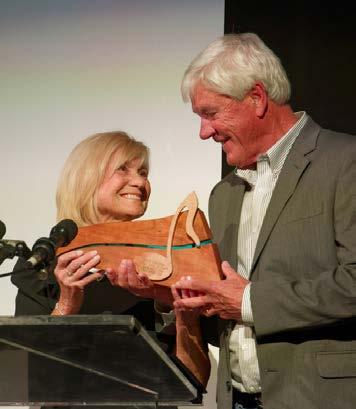

Multi-instrumentalist, arranger, conductor, and composer Cameron “Cam” Mullins was posthumously inducted into the West Virginia Music Hall of Fame April 12 at a ceremony held in Charleston, West Virginia. Mullins played trumpet and trombone in the Woody Herman band early in his career, and in the ‘70s arranged the million-selling Ray Price album For the Good Times. He was named Billboard Country Arranger of the Year in 1972.
Artists who worked with Mullins include Connie Smith, Johnny Cash, Willie Nelson, Jerry Lee Lewis, Joan Baez, Bobby Fenton, Al Hirt, Dick Fontaine, Brenda Lee, Perry Cuomo, Chet Atkins, J.J. Cale, and Tom T. Hall. Mullins also conducted and composed for symphonies in Oklahoma, Nashville, Houston, and Dallas.
Mullins’ daughter Karen and her brother Cam Mullins, II, accepted the award for their father. “[My father] would be extremely proud and honored for this recognition, and so is our family,” Karen said. “West Virginia will always hold a place in my heart.”
The event was hosted by Asleep at the Wheel’s Ray Benson and cellist Juliana Soltis, and included many musical performances by a host of artists including fellow Hall of Fame member Kathy Mattea.
For more information about the WV Music Hall of Fame, visit wvmusichalloffame.com.
Trisha Yearwood was honored with a Hollywood Walk of Fame star March 24 during a midday unveiling in Los Angeles in front of the iconic Capitol Records building. Friends and family, including her husband Garth Brooks, joined the artist for the Vine Street ceremony.
“It’s very surreal to be here...The thing that makes it so special are the people who are here. I see a lot of faces who have been coming to see me live since 1991,” she said. “I love you, and you know that!” Yearwood said.
Close friends and fellow artists Reba McEntire and Carly Pearce were on hand to celebrate Yearwood’s career and impact.
“People tell you never to meet your heroes,” shared Pearce. “But the woman that we are all celebrating today had made me and so many other aspiring country music singers think differently…For me, what matters is the impact she has continued to have on this industry, this genre, on me and all of the next generation of female country artists, and as my friend,” Pearce said.
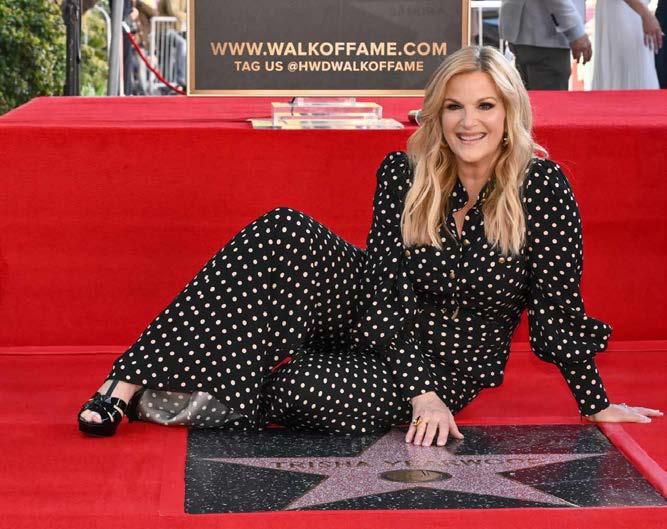
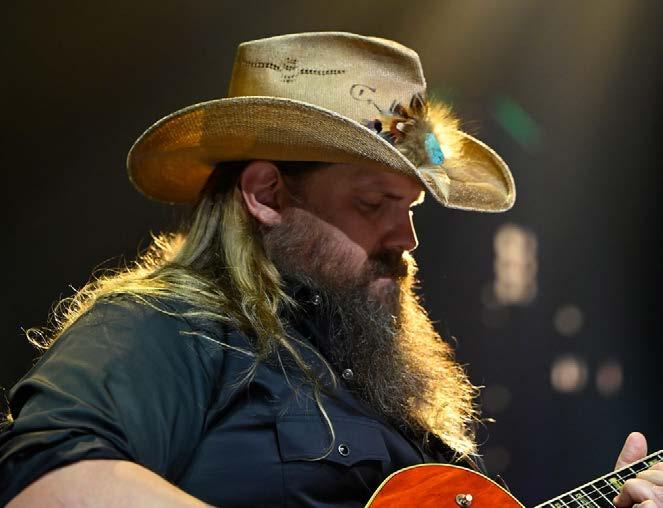
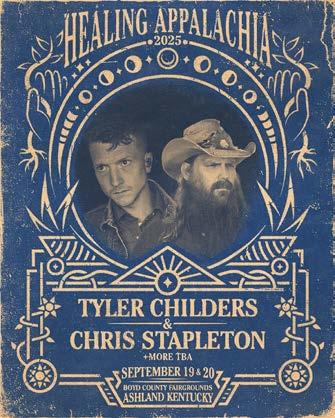
Chris Stapleton will coheadline the 2025 Healing Appalachia Festival Sept. 19 and 20 in his home state of Kentucky, with another Kentucky native set to perform, Tyler Childers. The event will take place in Ashland, and is considered to be the largest recovery-focused festival in existence.
The event is the flagship production of the charity Hope in the Hills, and was founded by the Childers team. For the past five years, the festival has been held in West Virginia, but this year will take place in Stapleton’s and Childers’ home state for the first time.
“Moving the festival to Eastern Kentucky and to the heart of The Country Music Highway, we could not be more excited or humbled to have two of the Commonwealth’s greatest songwriters and voices
HEARD ON THE
for their people – Chris Stapleton and Tyler Childers,” shares Dave Lavender, board president for Hope in the Hills. “Not only have they both urgently and boldly shared their journeys and songs of home with the world, but both are first in line to roll up their sleeves and help folks in need. We can’t wait to leave the porch light on for them here in the hills of home at Healing Appalachia.”
Hope in the Hills is dedicated to fighting the opioid crisis and supporting recovery.


Taylor Swift’s The Eras Tour will be featured in an exhibit at The Country Music Hall of Fame and Museum now through spring 2026.
Swift’s tour sold out a record-breaking 149 stadiums on five continents from March 2023 to December 2024, playing to 10.1 million fans in total. In the new display, items from the longtime Local 257 member’s Fearless set of the tour are included, such as Swift’s custom Roberto Cavalli couture silver fringed dress with crystal embellishments, Christian Louboutin silver embellished boots worn by Swift and her Gibson J-180 Custom Crystal guitar, which includes 5,000 Swarovski crystals and the number 13, inlaid with crystals on the guitar’s body.
Artifacts from the Speak Now set are also on display, including a gown made with 500 yards of glitter tulle in various shades of purple, and embellished with more than 3,000 crystals. Additionally, another guitar from the tour — her Taylor GSLJ Living Jewels acoustic guitar, with a turquoise blue finish and koi fish inlays on the fingerboard and top — is also in the exhibit.


The finale of the Grand Ole Opry’s 100 year celebration on NBC featured Vince Gill, Trisha Yearwood, Reba McEntire, Ronnie Milsap, Randy Travis and many more Opry stars singing “Will the Circle Be Unbroken.”
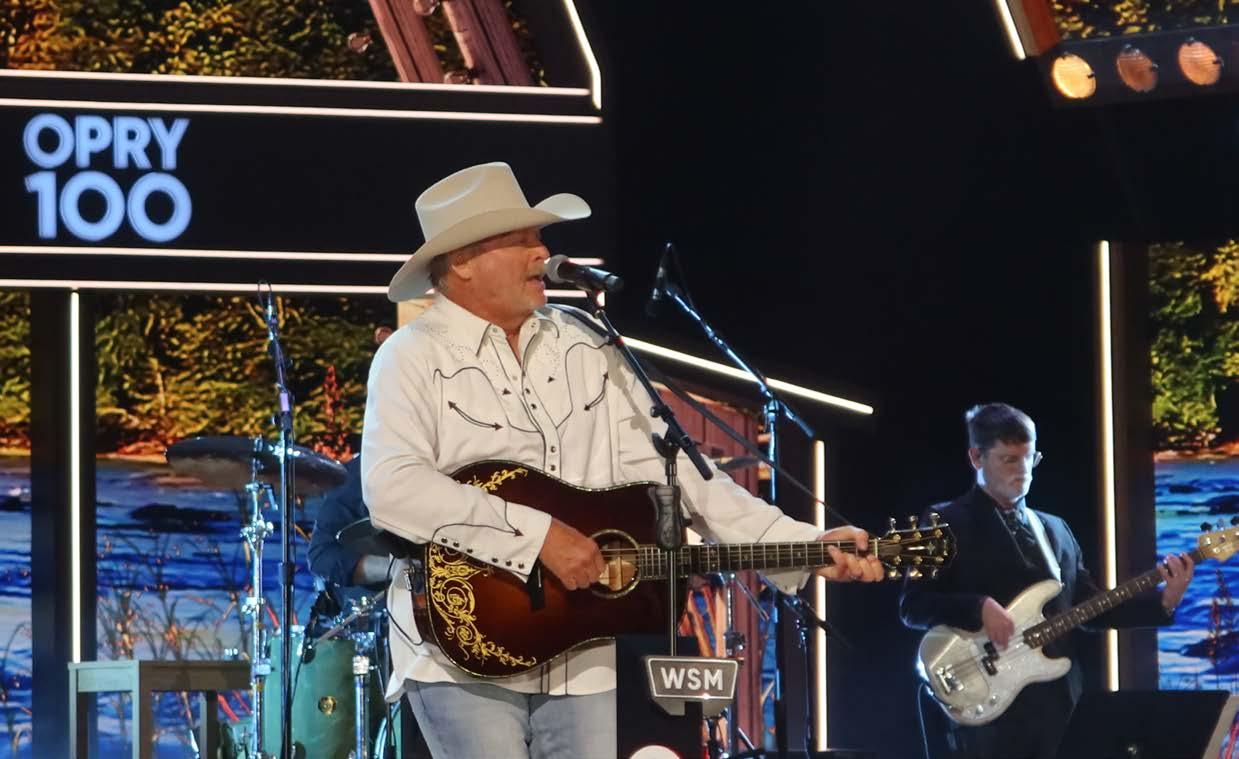
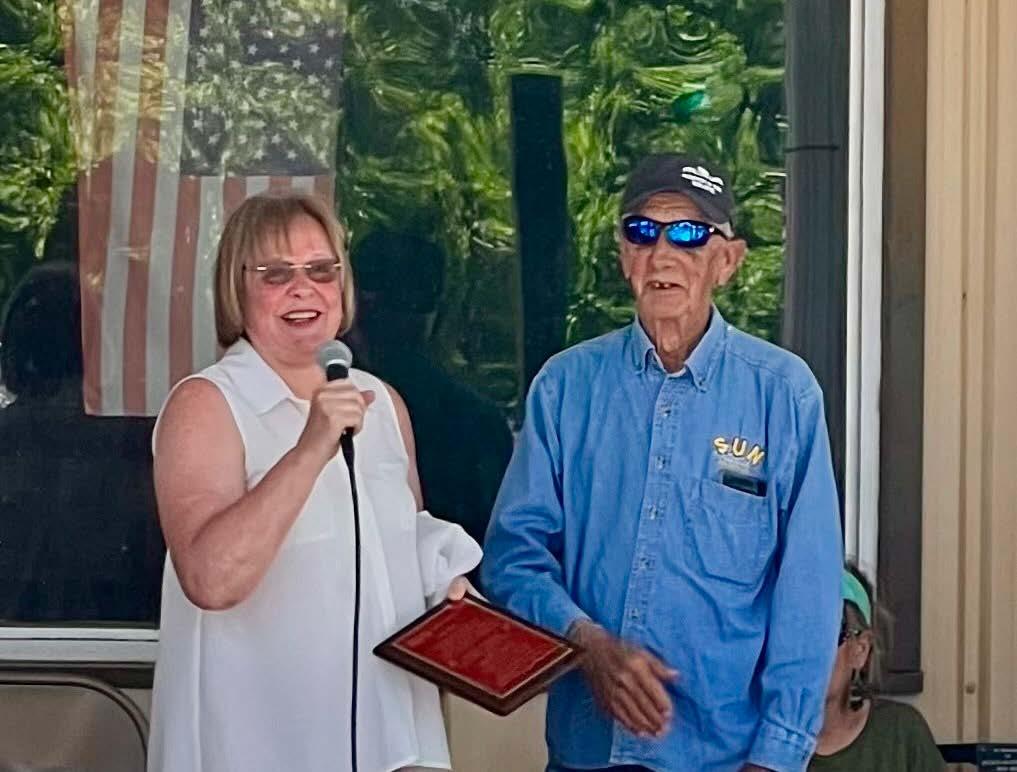
Gene Chrisman named Adairville parade grand marshal
Legendary drummer and AFM 257 Life
Member GENE CHRISMAN was named Grand Marshal of the annual Adairville, Kentucky, parade, held during the town’s annual Strawberry Festival on May 15. Chrisman has recorded and toured with a host of artists including Elvis Presley, Aretha Franklin, Herbie Mann, Al Green, John Prine, and Neil Diamond.


1. 257 member SUNNY DADA performed with his Afrobeat ensemble April 13 at Cheekwood as part of the 2025 Bloom Sunday concert series which features Nashville Musicians Association’s musicians.
2. Bluesman YATES MCKENDREE (guitar and vocals), with KEVIN MCKENDREE on organ, along with drummer GRIFFIN PHOTOGLO and guitarist ROBERT FRAHM, perform at Cheekwood March 31.
3. DAVE POMEROY presented RINGO STARR with a proclamation honoring his achievements and making him an honorary member of Local 257. Pomeroy made the presentation during the former Beatle’s debut visit to the Grand Ole Opry Feb. 21.

1. The Sofia Goodman Group performs for students at Smyrna Middle School in February. (l-r) MATT TWADDLE -keys, LELAND NELSON -bass, GOODMAN -drums, JIMMY LOPEZ-percussion, JEFF COFFIN -sax, ROLAND BARBER-trombone Not pictured: GUS ARNOLD -sax and EMMANUEL ECHEM -trumpet.
2. Local 257 member DONNA WEHOFER shows students at Bradley Academy in Murfreesboro how to pluck violin strings, as the musicians played Vivaldi’s “Winter.” She said, “The students love learning and saying the word pizzicato!” (l-r) Violinists TERESA HARGROVE and ANNE LANDIS JETTON, , LINDA DAVIS -viola, AMBER DENEXTER-cello.
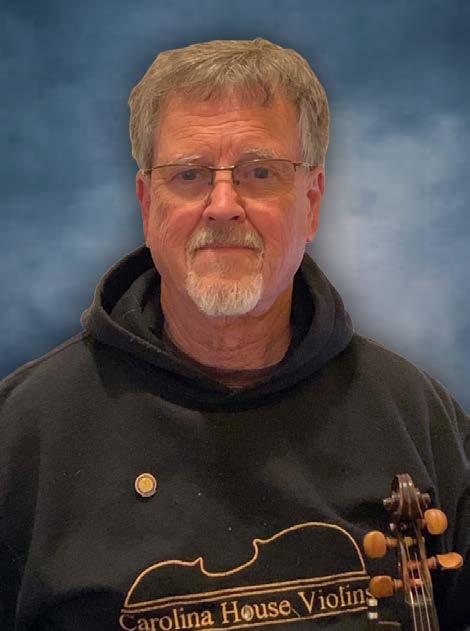
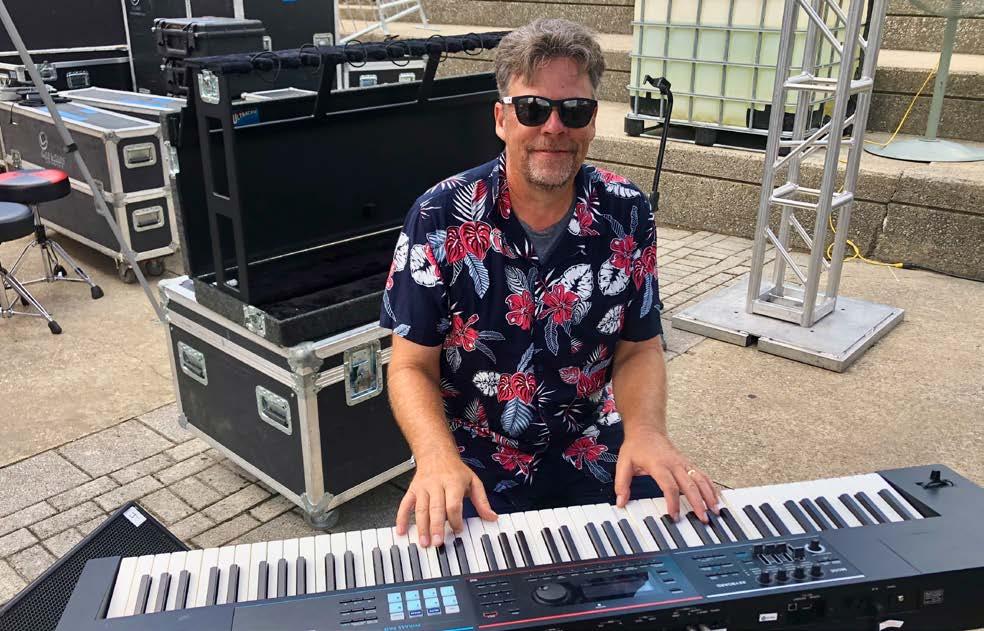
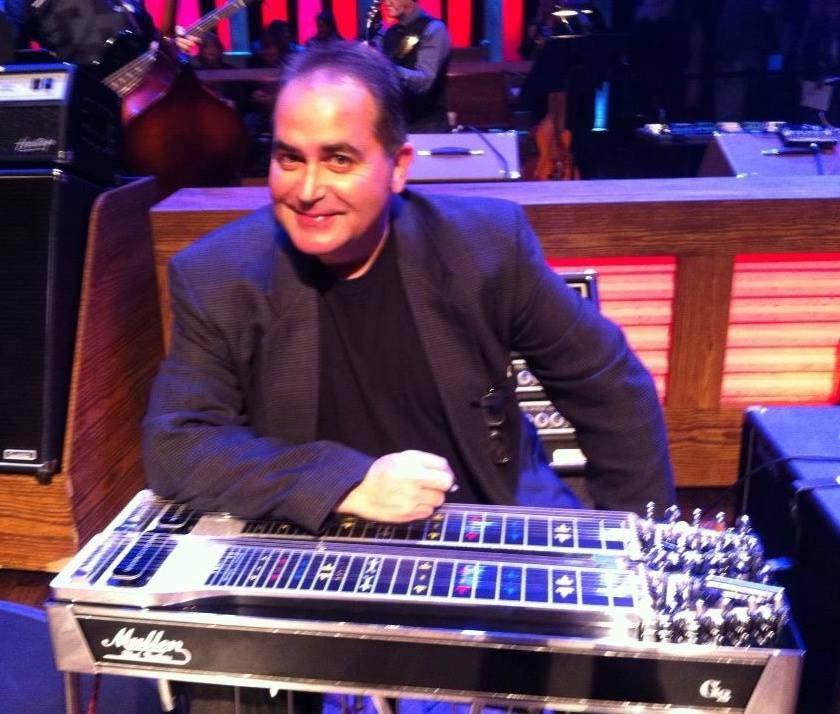
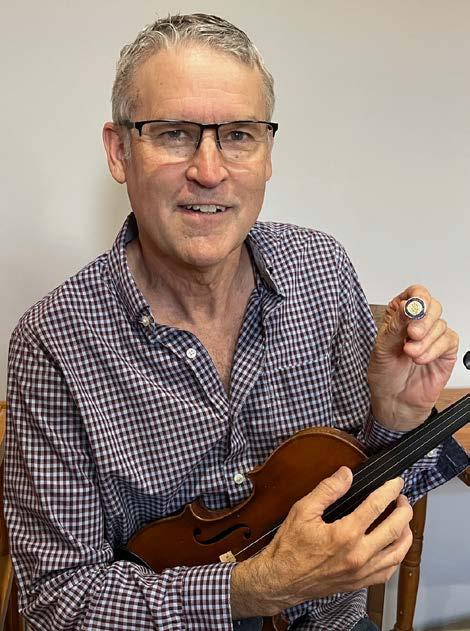
1. Fiddle player MICHAEL HARTGROVE displays his new AFM life member pin.
2. Keyboardist DANIEL NADASDI is a new 25year member of Local 257.
3. Opry steel guitarist TOMMY WHITE is a new life member of Local 257. He’s also a member of the Steel Guitar Hall of Fame and the Kentucky Music Hall of Fame.
4. Multi-instrumentalist WARD STOUT poses with his fiddle and his new life member pin.


Are you an independent songwriter with music streaming in the U.S.?
If you’re not connected with The MLC, you could be leaving money on the table.
With over $3 billion in total royalties distributed, we’re dedicated to making sure creators are paid their mechanical streaming royalties accurately and on time. Have questions? Our Support Team makes it easy to sign up and start getting paid. Contact us at themlc.com/contact.
themlc.com
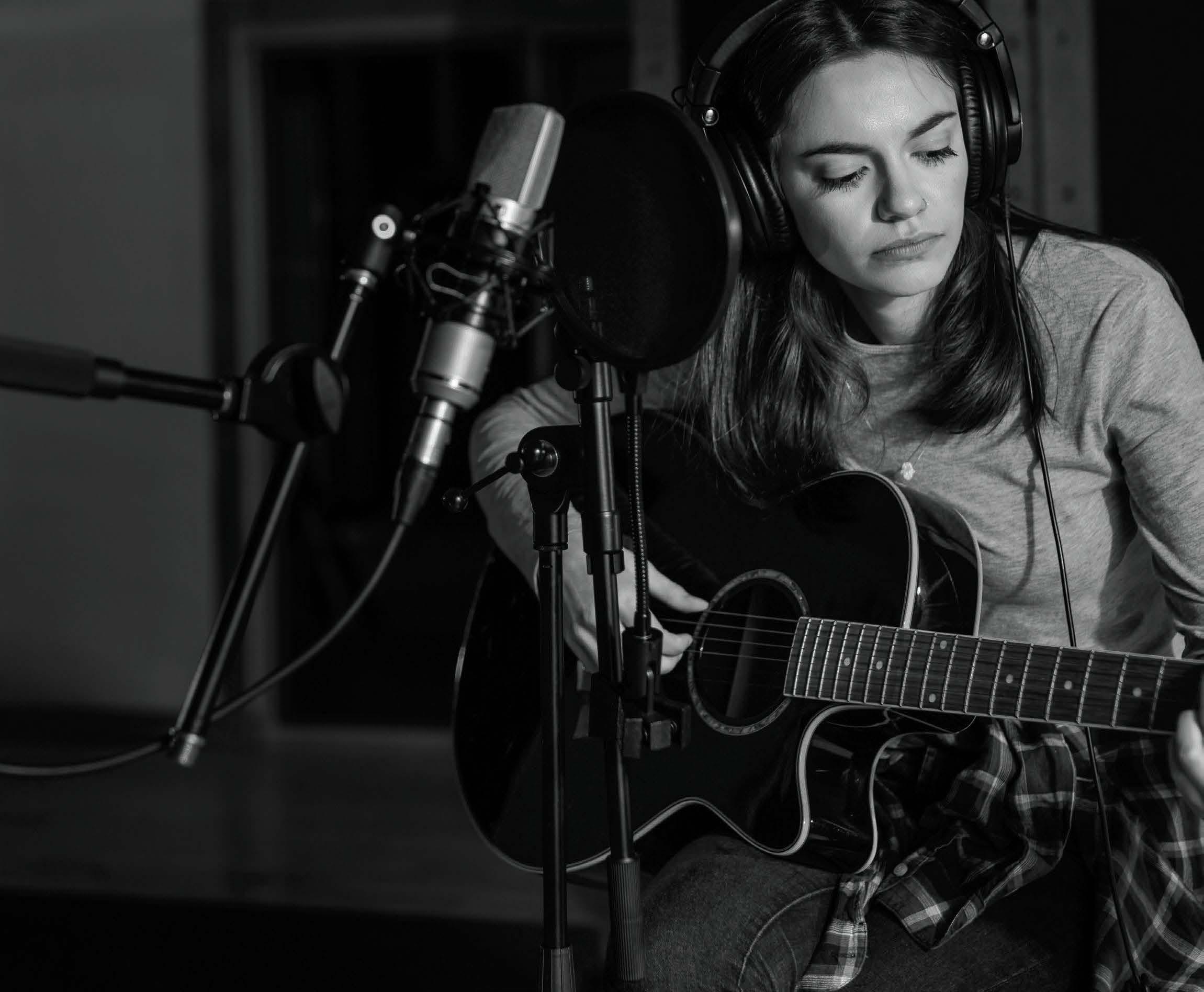

Access key resources to navigate your career as an independent songwriter. Learn how to join The MLC for FREE. Start collecting your streaming royalties, and more!
Maximize your earnings and utilize The MLC’s Songwriter Toolkit by scanning the QR code below.


by Warren Denney
You might be tempted to think there’s a hand on the big wheel. A break here. A phone call there. Things fall into place. Then, the laughter, the drinks and the backslapping fades, and the rubber meets the road. You either produce or you cannot. You play or you don’t. You write or you can’t.
uddy Cannon will not tell you entirely how he became a decorated, award-winning producer and songwriter. How he had the wherewithal and the substance. In fact, he has jokingly referred to himself as a “leaf in the wind.”
Maybe a cold call from Mel Tillis to Cannon on a pay phone in a lounge on Murfreesboro Road might have made him feel that way. Or, maybe it was a beer and a jam on the first night in Nashville with a Chicago acquaintance leading to a six-year run with Bob Luman. Whatever the interpretation, Cannon is no drifter.
He is, rather, a lighthouse in a storm. His resumé includes having produced and written numerous hits, including a slew of Nos. 1, for artists ranging from George Jones to Mel Tillis, to Sara Evans and Sammy Kershaw, Shania Twain and Billy Ray Cyrus, Reba and Merle Haggard, to longtime partners Kenny Chesney and Willie Nelson — just to name a small but mighty handful. Cannon was named the Academy of Country Music’s Producer of the Year in 2006, inducted into the Nashville Songwriters Hall of Fame in 2021, and given the President’s Award from the Nashville Songwriters Association International in 2024.
He cowrote “Give It Away” with Bill Anderson and Jamey Johnson, which earned the CMA and ACM awards as Song of the Year in 2007, and was honored by the U.S. House of Representatives for his contributions as a producer in 2008. Cannon has earned three Grammys, all with Willie — Best Traditional Pop Vocal Album with Summertime: Willie Nelson Sings Gersh -

win, awarded in 2017, then with My Way, translating Sinatra, awarded in 2019, and again for Best Country Album with A Beautiful Time, awarded in 2023.
“And, I barely know what I’m doing,” Cannon said recently, smiling, from his office in Berry Hill, situated within the Blackbird Studios cluster. “Leaf in the wind.”
His office is unassuming, considering the freight. But it is somehow appropriate, and Cannon’s success has always been rooted in his willingness to collaborate and form a real understanding of any artist. He applies his own concrete perspective to the work, and the results speak for themselves. He knows when to pull the trigger.
Cannon was raised in the Juno community, near Lexington, Tennessee.
“Yeah. I grew up in a house with my mother, my grandmother, and two of my sisters,” Cannon said. “My mom got remarried later and I had another stepsister. But my mother was a musician. She was an excellent harmonica player. She could play guitar, and she could play piano. And, I had an uncle who lived about a mile up the road from us, Dalton Tate, and he was an excellent musician. He played fiddle, guitar, bass, upright bass.
“He knew I loved music and I liked to sing...those guys down there would just gather up on the weekend at somebody’s house and play. I think he saw that I had a knack for it, and he started whenever he would go somewhere to play, he would just drive by and pick me up and take me with him.”
Those weekends and trips were how Cannon cut his baby teeth — and led to the purchase of his first guitar.

“So, I bought my first guitar when I was twelve with money I made picking cotton,” he said. “I bought that little twelve-dollar Silvertone and I messed around with it a little bit. It made my fingers hurt. I put it under the bed for maybe six or eight months, and didn’t really touch it.”
But, the desire remained, and it burned. He just needed more motivation, and as it turned out, a religious transference from hidebound gospel to rockabilly.
“I found out they were having a talent contest at school,” Cannon said. “I guess, in eighth grade. And I thought I’d learn to play something on that guitar — because I knew nobody else in my class could. So, I got it out and it had a little thin book with some instructions and some songs with the chords written over them, old gospel songs, ‘Old Rugged Cross’ or something like that.
“I loved Carl Mann. He was from Huntington, Tennessee, and he made some records for Sam Phillips out of Memphis. Couple of big hits. ‘Mona Lisa.’ And I loved that record. He had another, ‘Pretend You’re Happy When You’re Blue,’ the old pop song. His deal was taking those old pop songs and making rockabilly cuts out continued on page 18
of them. Those songs really intrigued me because I still hadn't learned how to play anything but ‘Old Rugged Cross.’
“So, I thought I wasn’t going to get very far singing that. I entered the talent contest, and in the meantime, I figured out how to play the Carl Mann songs. I played ‘Pretend,’ at the contest and won. And I don’t know what I won, but I liked the feeling — I liked standing up there and singing and letting people clap for you.”
It is noteworthy that Cannon began to define himself then. He was making noise out in the country — in the middle of nowhere — learning to sing and figuring out some licks, albeit painfully.
“All the neighbors said they’d hear me late afternoon,” Cannon said. “I’d be out in the yard on the front porch, just singing as loud as I could sing. We had a well with covered pipes that went down in clay or something, I don’t know what they were made of, but I learned that if I went over there and sung down into that thing, it sounded good. It’s got reverb on it.”
He hears, and he knows what he wants to hear. Once that realization comes about, there’s no turning back. Again, his uncle played a role in his development.
“Once he saw that I was learning, he could see that I was going to figure it out,” he said. “That old guitar was terrible. I mean the strings were that high. He came home

from work one day and asked where it was. It was under the bed. He had me go get it, and bring it out of the house. He opened up the back door of his car, and there was a guitar in there. It was a Gibson, an L-1 or L-2 model.
“He said, ‘I’m taking yours, and you’re keeping this one.’ From then on, I just started teaching myself. Never had any lessons.”
It was a big-hearted act, the type of caring that changes young lives, and certainly set Cannon on his way. His self-taught education included listening to everything he could. His uncle had a big cabinet stereo, and he would make for it after school.
“I loved everything, man,” Cannon said. “I’d walk up to his house and get his records out. I remember the only place he had for his record player was in their hallway, and I’d sit down on the floor in front of that big cabinet. He had 78s of Bob Wills, Hank Williams, and bluegrass, Bill Monroe, and everything. He didn’t have a lot of records, but he had some good ones.
“And, I don’t know — when I was a junior in high school maybe, I got with some guys and we put a little band together. We started

playing teen dance things, and we were doing the Beatles and Rolling Stones, all that stuff. I was playing lead guitar then.”
In his mind, Cannon knew he would leave Juno and take an intentional risk. That leaving may not have manifested itself perfectly, but he made a move.
“I’m not sure I really knew who I was, then,” Cannon said. “I started dating a girl, and we became pretty serious. I graduated from Lexington High School in ’65, and she and her family had moved to Chicago. Those factories were paying pretty good money at that time. I decided I was going to go visit her, and didn’t even tell them I was coming. My stepdad took me to Jackson, and I bought a train ticket. It was 50-something degrees when I got on the train and rode to Chicago. I’d never been anywhere before. I got off that train and it was 20-below zero.
“Holy shit! I had no money, barely enough. I got a taxi from downtown out to Maywood, Illinois. They were renting an apartment there. I knocked on the door, and my wife’s little brother opened it and said ‘Buddy Cannon,’ and wham (!), he slammed the door. They let me stay, though. I never went back home except to visit my mom.”
Cannon had no way of really knowing in the moment, but it was his initial step into the greater world of music — and into the greater world of living. He and his girlfriend, Billie, married, and her stepfather helped him get a job at a Motorola television factory in Melrose Park.
It is the way lives simmer and evolve. And, it helps if you can play bass.
“I started listening and there was this little band that played the weekends in bars up there. And, they needed a bass player. I never played bass before, but I figured I
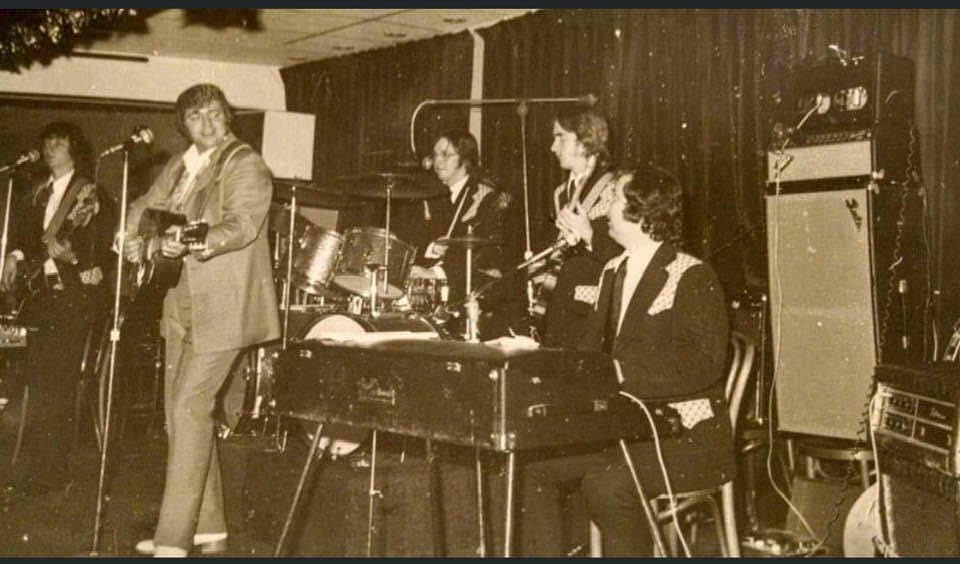
could learn. So, I bought me a Fender bass, an Ampeg amp — I still have both of them — and I figured out how to play it. I went and auditioned with those guys.
“They were great people, but it turned out I could play better than any of them could — and that ain’t saying much, because I was pretty bad myself. They were country, though. So, I kept listening to see what else was going on up there with other bands. There were clubs, and little old honky-tonks.”
Again, Cannon knew what he wanted to hear, and he found it.
“There was another band up there that I went to see, and man, these guys were good,” Cannon said. “I mean they were Nashville-caliber players. I introduced myself to them and I started going by there, and I’d go whenever they were playing — and they were playing five nights a week.”
He screwed up the courage to approach the band leader, Bobby Pierce, and once again the fate of the bass player came into play.
“He told me the bass player was quitting,” Cannon said. “I asked to try out, and by then I’d learned how to play it. It turned into a six-year gig.”
Country music has always been an integral, if unsung, part of Chicago’s history. It thrives wherever hard-working people gather. For love, Cannon might have landed in a far worse place. Bobby Pierce, a union steward by day at American Motors in Kenosha, Wisconsin, and his band The Nashville

Sounds were the house band at the Lake N’ Park Inn in the Palos Hills area of Chicago.
Pierce had made a bit of a name for himself, and the venue had a deal with WJJD Radio. They would bring Nashville artists in on Saturday nights.
“We were getting a lot of notoriety, and they started booking those acts,” Cannon said. “Most of the people they booked in that club didn’t have a band. Not all, but most. Word got around down here [in Nashville] that this band could play their songs.
“I met so many people that I ended up knowing when I moved down here. My first gig when I came to Nashville was with Bob Luman, and I met him at the Lake N’ Park Inn. Our band was good, but I felt if I wanted to do this, to do Nashville, I had to come down here.
“One of the groups that they had booked in the club in Chicago was Pete Drake and his band, which had Johnny Gimble. I met all these guys on the same night up there, Pete, Johnny Gimble, Billy Ray Reynolds, Dale Sellers, Jack Drake, D.J. Fontana. Pete liked our band a lot and he actually had us come to Nashville, and produced an album on the band.”
Cannon met Johnny Carver at the Lake N’ Park Inn, an Epic recording artist with Top 20 records. And, when Cannon decided to make the move to Nashville, on the first day in town, he called Carver from a hotel room, who promptly asked him to show up at Bob Luman’s house that night and to bring his bass.
Naturally, Luman needed a bass player.
At Luman’s house in Hendersonville, Cannon ran through three or four songs with
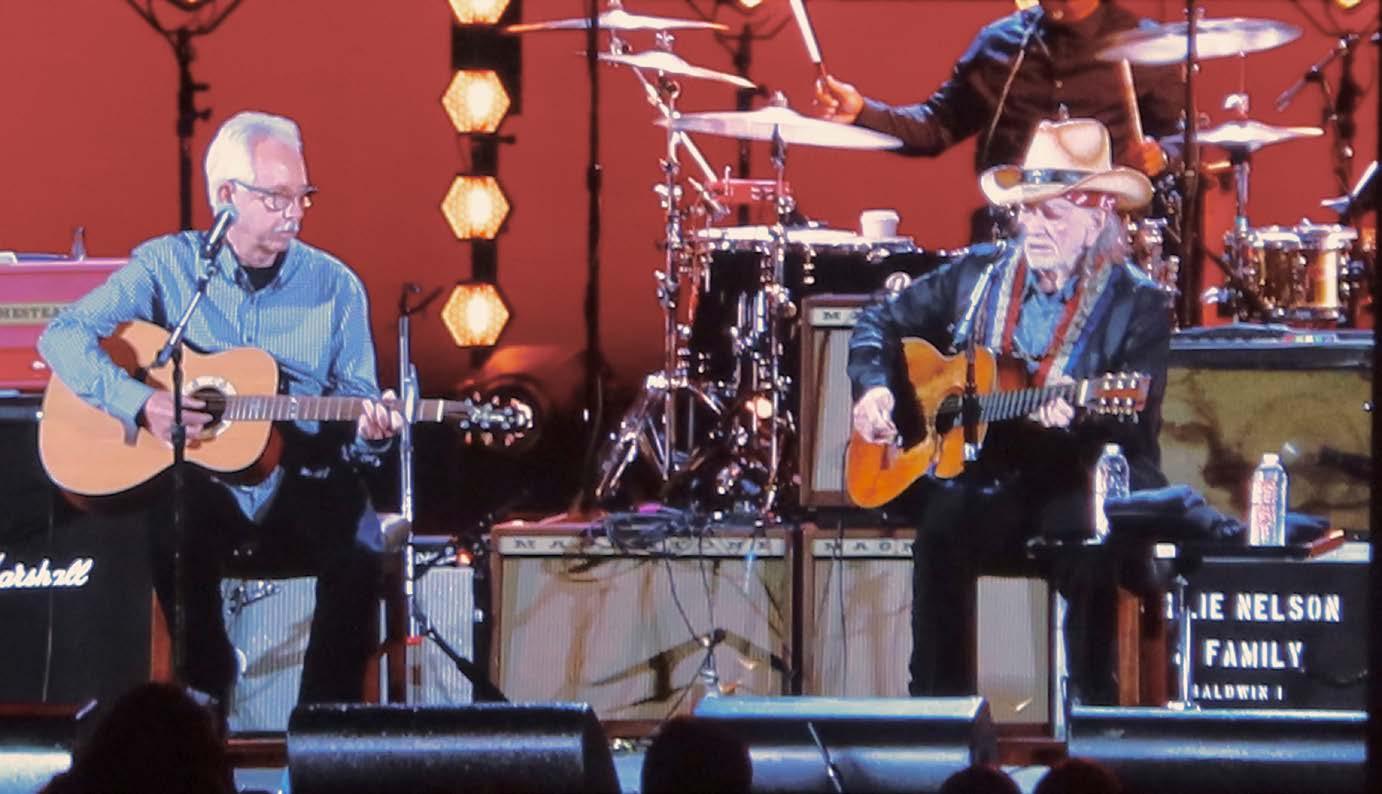
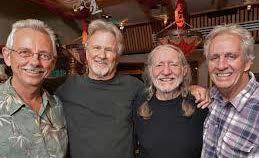
the band, and was hired on the spot. But, there was a kicker. They would be leaving town the next night, and before they would hit the road, they would play the Opry. And, they would play “When You Say You Love,” a new song.
“It kind of freaked me out because I knew all his other stuff, but I didn’t know that song,” Cannon said. “I hadn’t gotten the hang of the number system, but I learned it, and we played the Opry the next night. We hit the road for some dates, and wound up in San Antonio, where we played a big benefit show for [an ailing] Bob Wills. I mean everybody was there. I thought, ‘Oh man, I’ve fallen right into Hillbilly Heaven.”
Cannon began writing, he says out of boredom, while riding the bus in Luman’s band. He would stay with them for three years. He wanted to do something different and was looking to take his next step. No one was really aware of his writing, though Luman had recorded a couple in Cannon’s words “to throw me a bone.”
“But I kept at it,” Cannon said. “I started liking it — the process — and I decided to get off the road with Bob. There was a group on the Opry called The Four Guys Quartet,
and they had a nightclub out on Murfreesboro Road, the Four Guys Harmony House, and Steve Smith, the guitar player for Bob, had gone to work out there.”
No surprise, they needed a bass player. Smith called Cannon to try out and he was hired. It wasn’t his dream gig, but allowed him to focus more on his writing. Still, he wanted to be somewhere else, and the opportunity revealed itself in the form of a pay phone call at the club.
“One of the waitresses came up to the stage and told me that someone was on the phone for me — says he’s Mel Tillis,” Cannon said. “I thought someone was jacking with me. He had won CMA Entertainer of the Year the night before. I answered the pay phone, and he said ‘Hey hoss, this is Mel Tillis…I just recorded one of your songs.’
“I still thought somebody was messing with me, and he asked me about my gig that night. He said ‘Well, when you get finished, get your ass down to my office. We’re sitting down here listening to your song. I still thought it was a joke, but I thought just maybe, and I’m going because I got invited to Mel Tillis’s office.”
It was the break that changed Cannon’s life. Tillis had come by Cannon’s songs through a new song plugger, Jimmy Darrell, who knew him from Chicago. Tillis had recorded “The Golden Nugget Gambling Casino.”
“I drove down there and he was drinking a beer and playing my song,” Cannon said. “At daylight, I was still there. He told me to come to RCA that afternoon, and I did, and he cut three more songs of mine. I went from not being a songwriter to having four
songs recorded by the Entertainer of the Year. It’s crazy, just sitting here and thinking about it.”
It was 1976, and Tillis signed Cannon to a writing deal. He would work for Tillis in one capacity or another for twelve years.
“I had a real songwriting growth spurt,” Cannon said. “He listened to everything I wrote, and told me when I was doing something wrong. It was pretty crazy. He treated me like he’d known me all his life.
“But, also, he knew I was a bass player, and his primary bass player in the Statesiders, Larry McFadden, was his straight man for all his comedy stuff. They loved each other, but they’d get into it, and one of them would quit the other. Either Mel would fire him, or Larry would quit. When Mel found out I could play a show, I rode the bus as a Statesider. He’d really miss his straight man, and hire him back … I might get a phone call at four in the morning and Mel would say ‘I just fired Larry again. Be at the airport.’
“One time he called me up and told me he’d fired Larry, and they were in Vegas. He said, ‘My plane’s leaving out there [from Nashville] tomorrow morning, and bringing a couple of people. Be on it.’ And when I landed, he and Larry had already made up and Larry was on the bus to pick me up.”
All the while, Cannon was in charge of making sure all the demos for Tillis’ publishing company were done correctly, and he was bitten by the producing bug in a big way. Enthralled. It had put him in the studio, producing the company’s demos.
“I got a ton of experience doing that,” Cannon said. “And, I stayed with him as a songwriter and plugger until he bought Cedarwood Publishing and expanded his company and made it bigger. Then PolyGram came to town, and to restart their publishing operation, the first acquisition in 1989 was they made Mel’s company’s catalog. They hired two people from Mel’s company to go with the catalog — one of them was me.”
“So I thought, ‘Man, I’m getting closer to this, somebody who can let me make some records.’ By then, I was pretty methodical about what I wanted to do, and whatever I did was to get me closer to that.”
He stayed at PolyGram for a few years, entrenched at Mercury, and though he thought it was his way in to producing records, it wasn’t
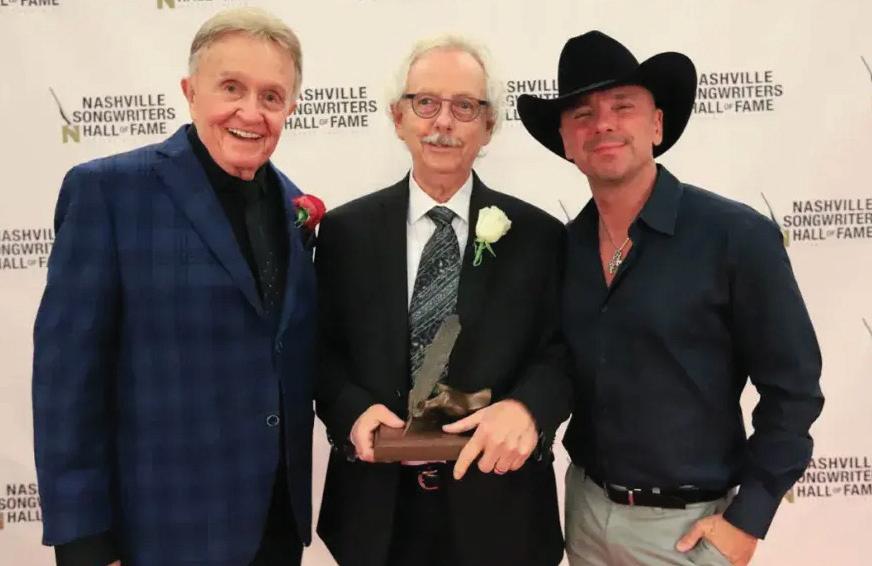
in the cards. The company wanted him to keep finding songs for others to produce. He didn’t mind that, but he wanted more.
A friend came to him one day with a cassette that blew him out of his chair. It was Sammy Kershaw on tape, and Harold Shedd gave him the green light to go into the studio, on condition he worked with Norro Wilson to produce. Kershaw blew up with that debut record Don’t Go Near the Water in 1991.
Though he’d coproduced a platinum record, Cannon did not have an open lane back into the studio. He managed to produce a George Jones record High Tech Redneck, again with Norro Wilson, because Jones loved what they had done with Kershaw. Even still, Cannon had no green light.
Enter Kenny Chesney. He had signed with Acuff-Rose as a songwriter, and that office was across the street from Cannon.
“Kenny liked to hang out and flirt with our receptionist,” Cannon said, smiling. “So I’d see him every day — he’d be over hanging out in the lobby. I knew he was a songwriter, but I didn't know he was chasing a record deal.”
The two became friends and Chesney approached him and wanted Cannon and Wilson to produce him on Capricorn. Cannon had to refuse, but it tripped the wire. He decided to quit Mercury, and approached Warner Chappell about a songwriting deal that would give him income for a couple of years while he leaned into producing opportunities. Chesney heard, and came calling.
“I used to dream about finding one artist like Kenny,” Cannon said. “I didn’t realize it was going to be him, or that it would last almost thirty years.”
Cannon has produced Chesney since 1997, beginning with I Will Stand
His Willie Nelson relationship is equally astounding. Though he had met Willie many years earlier, it wasn’t until Chesney had cut the old standard “Lucky Old Sun” as the title track for his 2008 record, that a lasting connection was made. They reached out to Willie, and he came up to sing on it for Chesney.
“So Willie shows up, sings the song, just magic, and he had a good time on the session,” Cannon said. “He asked me to send him the mix, which I did, and he flipped. He said he’d listened and thought it was the best that song had ever been done. He asked me to find some songs and let’s go make a record.
“I told Kenny, and it all came together. He wanted in, and Willie said yes, and we cut the record Moment of Forever.”
The record, also released in 2008, triggered a run in which Cannon has produced fi fteen of Nelson’s records, and the two have written over fi fty songs together.
In retrospect, it’s hard to imagine a career so productive with legs straddled in both worlds. It’s a life of risk, certainly, but not lived as a “leaf in the wind.”
“I would say if I had to pick one to do [producing or songwriting], one or the other, it would probably be on the producer side,” Cannon said. “I think it’s how I identify myself. I remember asking Mel why he didn’t write anymore. He said ‘Because I’ve written it all.’ I don’t think that — I still write — but I understood. If I look back at the longevity of it all … [I’m more of a producer.]”
And, definitely, a lighthouse in a storm. TNM






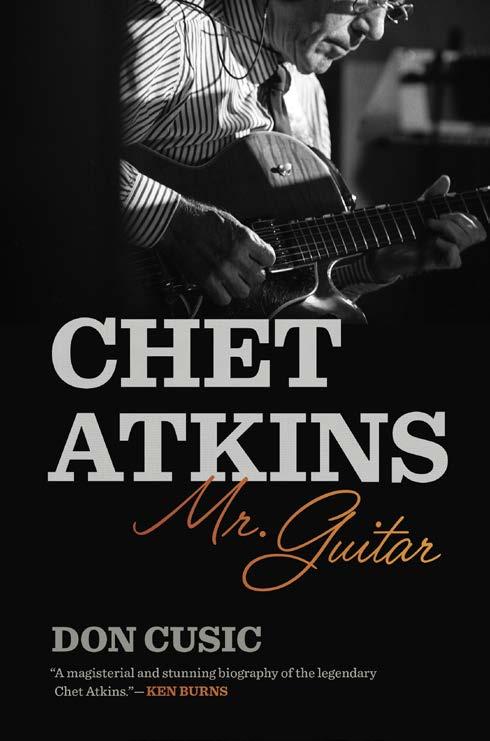
Mr. Guitar is a detailed portrait of the life and career of one of Nashville’s most influential musicians, Chet Atkins. This epic 450-plus page book is written by longtime Nashville resident and professor of music industry history and business at Belmont University, Don Cusic, who tells Atkins’ life story in a direct and appropriately unassuming way. The book takes the reader along with Atkins on his incredible journey from very humble beginnings — complete with family drama and health issues — to not only achieving the highest level of accolades as an artist and musician, but also making a huge impact as a record executive, producer and mentor to countless musicians.
Born in Luttrell, Tennessee, in 1924, Atkins fell in love with music at an early age, first through the fiddle, and then finding his true love, the guitar, at the age of eight. His passion and love for music helped him slowly climb his way up the ladder of the music business, despite numerous challenges and occasional setbacks along the way. In the end, time after time, he was the right man at the right time with the right instrument. From the Carter Family, Red Foley and Eddy Arnold, to Mark Knopfler, Earl Klugh, and Tommy Emmanuel, his reach over a six-decade career was worldwide.
The book tastefully delves into Atkins’ personal life, including his marriage to his longtime love, Leona, his thought processes and occasional uncertainties, as well as his passion for guitars and musical gear. When RCA hired Atkins to run the Nashville branch of their record label, he made sure things were done right, and the musicians he hired were treated with respect. After all, they were his friends and colleagues, and he wouldn’t have it any other way. His counterpart at Decca, Owen Bradley, felt the same way and together they established the ground rule that transformed Nashville into Music City – respect between employers and musicians. The evolution of the Nashville Sound was something that over time had mixed reviews, but as Atkins would sometimes say, “That was the sound of us trying to keep our jobs!”
As Atkins continued to evolve as a musician, he created many opportunities for others to shine as well, and brought great musicians together in various ways to make timeless music across nearly every imaginable genre. Musicians like Steve Wariner, the late Terry McMillan, Pat Bergeson, Randy Goodrum, Suzy Bogguss, Doyle Dykes, and so many others had long musical relationships and friendships with Atkins. Right up until the end of his life he was always advocating for musicians, including creating the Chet Atkins Musicians Days festivals in the late 1990s that brought everything full circle. His last public appearance was at the 2000 Musicians Days finale concert at the Ryman, and Atkins tried to sell his Cadillac onstage as he was no longer able to drive! His self-deprecating sense of humor lived on to the end of his days. This book is a great read that delves into the many sides of an extremely talented and influential man, who changed the face of Nashville forever.
— Dave Pomeroy

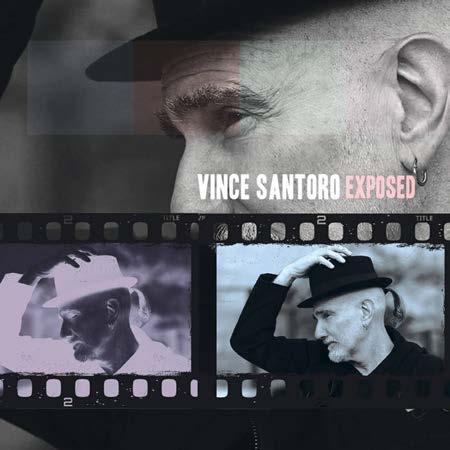
Drummer, vocalist, and songwriter Vince Santoro has maintained a dual career for many years.
In addition to playing drums and singing with artists including The Highwaymen, Rosanne Cash, Rodney Crowell, Felix Cavaliere and the Rascals, and many more, he’s also pursued various band and solo projects over the years, with The Cicadas, Air Parma, and Vini Vidi Vici. His latest effort is a solo project, Exposed, produced by his longtime friend and collaborator, George Marinelli. Between the two of them, they played the majority of the instruments on this project, with a few additional contributions here and there.
The nine original tunes showcase Santoro’s soulful vocals, economical drumming, and accessible, unpretentious songwriting, as well as Marinelli’s elegant and funky guitar textures and tasteful production — with all the right sonic textures fitting each song. As for the subject matter, Santoro offers a succinct explanation in the liner notes: “This collection of songs springs from childhood remembrances, social observations, and reflections from my seasoned perspective.”
Exposed kicks things off with a classic rock feel and an honest lyric about bringing your emotions into the open. “Rec Room” is a flashblack to his suburban childhood days, with a reggae swagger and lowdown horns courtesy of Jim Hoke. The bittersweet, soulful “For Adeline” is a pulsating but spare track surrounding Santoro’s soaring and passionate vocal, with Barb Santoro, who also sings backup on seven of the tunes, adding tasteful keyboard accents. “Everything” calls out those who don’t speak the truth, over a strident rock & roll groove. “I’d Be Dancing Too” is an inspiring observation of joy, with Jonell Mosser making a surprise vocal appearance to kick it up a notch. The rockmeets-reggae feel of “Too Familiar Sight” perfectly matches the lyric and Santoro’s pulsating bass, and Marinelli’s aggressive yet melodic electric guitar fills take things into the stratosphere. “What’s That Like” is a question from the homeless to those who have no idea what they go through every day, and the dramatic arrangement matches Santoro’s emotional vocal. The album closes with “Shade Tree,” an uplifting lyric and infectious groove, with slide guitar echoing behind Santoro’s passionate vocal.
This album is a great combination of songwriting, great playing and singing, and cool sounds, which is exactly as it should be. Santoro and Marinelli continue their longtime collaboration in fine style with this new project.
— Roy Montana
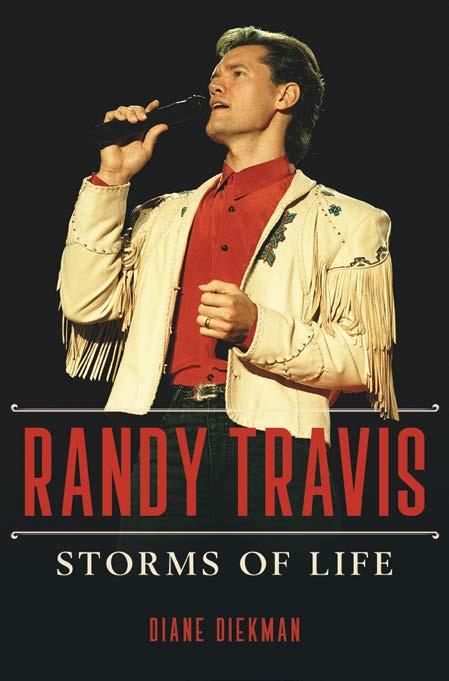
Diane Diekman
of Illinois Press
Randy Travis’s unique and dramatic life story continues to unfold, and the appropriately titled Storms of Life biography by Diane Diekman, captures his ups and downs in great detail. Diekman has previously written biographies of Marty Robbins and Faron Young, and obviously did her homework well in researching this book, which is a deep dive into Travis’ life and career before, during and after his rise to success. Diekman addresses the challenges Travis has faced, both self-inflicted and beyond his control, head on in a nonjudgmental way, and it adds considerable depth to the story.
Randy Travis’s rise to fame was not an easy one, and could have derailed at any number of points. His father shared a love for horses and country music with his son, but also was an abusive alcoholic with a long record of legal issues due to his drinking. Following in his footsteps to some degree, from his early days growing up in North Carolina, Travis seemed to have one misadventure after another leading to legal problems before he hit the age of 21. He won a singing contest at a club owned by Lib Hatcher, who lobbied for his release from custody and became his mentor and manager, and eventually his spouse.
After making his way with Hatcher to the Nashville Palace, Travis washed dishes and sang every chance he could. He met musicians like Leon Watson and Gary Carter, along with Jeannie Seely, who was an early supporter of his career. He and Lib Hatcher signed a publishing deal with Charlie Monk, and they began pitching his songs and voice around Music City. In the early ‘80s, his music was considered “too country” for commercial success, but by 1986, in combination with producer Kyle Lehning, Travis made a series of records and singles that altered the direction of country music. He was suddenly on the cutting edge of Nashville’s return to a more traditional country sound, paving the way for artists like Keith Whitley and Garth Brooks, who credits Travis with “saving country music.”
His career took off on an amazing trajectory, including work as an actor as well as numerous successful tours with his excellent road band, and many music industry awards. However, all was not well behind the scenes and various incidents and run-ins with the law led to a different kind of notoriety. After personal struggles including the breakup of his marriage to Hatcher, in 2013 he suffered a stroke that left his health severely compromised. With the help of his new wife Mary, and manager Tony Conway, he was able to slowly recover from his medical issues. He made select live appearances, and in 2016 he was inducted into the Country Music Hall of Fame.
Travis recently released an AI generated single, “Where That Came From,” demonstrating the positive side of this new technology. Along with Mary as his spokesperson, he made an appearance in front of the House Judiciary Committee in support of the American Music Fairness Act in 2023. He continues to make public appearances, and is touring with James Dupré singing his songs with Travis’s band and Travis sitting onstage enjoying every moment. This book offers wonderful insights into the complex story of a man with a voice that crosses all boundaries, and who has left behind a legacy of great records that will live on, forever and ever, amen.
— Dave Pomeroy
ownload a fillable time card from our website at Timecard (fillable).
Fill in the time card with all of the required information including session times, number of same day sessions, titles, artist, producer, leader, billing information, and the correct signatory — this is the owner/employer of the recordings regardless of who is paying for it.
Save the time card and send to timecards@nashvillemusicians.org or bring or mail a physical copy to Local 257 where it will be logged in and tracked through the billing process and beyond. We still distribute and accept the physical cards which many studios have available.
Make sure to get the correct company name, address and email on the card. Often when we receive a card we have to follow up to verify the billing or other missing information which slows the process. Having the correct address, contact person, phone number and email helps speed it along so everyone gets paid more quickly.
Next comes the session date and number of sessions along with the start and end time for each session.
For demos, the time card is the signatory agreement. Please make sure the employer or representative signs the bottom of the card. For all other scales, we need the current signatory agreements in place for the pension to be properly allocated. Leaders will be contacted to help get the proper documents if our repeated efforts fail.
After filling in or signing your name and social security number, remember to mark for any doubles, cartage, overtime and how many sessions you played.
Be sure to use correct song titles, and include the length of each song. This is very important for potential upgrades and new uses.
As you know, recording “on the card” protects the musician and the employer in a variety of ways:
1. It establishes a fair pay scale and a pension payment for all musicians on the session.
2. If the recording is used in another medium such as film, television, or a commercial, it will ensure that musicians receive a New Use payment.
3. If there is ever a dispute about payment, Local 257 will have your back and work to ensure payment. If the paperwork is not handled properly at the time of the session it will be more difficult to facilitate the New Use, so do yourself a big favor and take care of business on the front end.
Please give us a call at 615-244-9514 or reach out by email anytime you have specific questions or have an employer that needs assistance. Thank you!
We are grateful for longtime Local 257 member Austin Bealmear’s stewardship of the Jazz and Blues Beat column for more than 20 years. Austin helped many people make lasting musical connections in Nashville, and he will be remembered and appreciated for a long time.
So, where do we go from here? Jazz and blues both have a rich Nashville history and a strong presence today. It is essential to our mission that all genres of music are equally represented. We appreciate your help in increasing our reach to potential new members. Feel free to let us know what you are up to performance-wise. Our free Wednesday night events, featuring jazz, world music, soul and more, plus songwriter classes and musician-songwriter workshops, have been a great opportunity to open our doors to the community at large, and increase awareness of the wide variety of music going on in Nashville.
Many Nashville musicians teach, tour, write, record, and perform in multiple genres and situations in order to make a living. Their contributions help form our versatile recording community which can cover huge amounts of creative ground in a very time efficient manner — whether reading notation, improvising, or anything in between. This is a big part of why our recording scene is so robust and world-renowned, and why it’s important to document your intellectual property in as many ways as possible with an AFM contract.
Leslie Barr, our director of live music, can help you with our live contracts, which allow the option for pension contributions. Concerts that are cofunded by the Music Performance Trust Fund are another way we get our members work while promoting musical diversity. Members can reach out to Leslie for more information on how to get a trust fund grant that pays your scale wages for performing in-school clinics, playing live for seniors, or community concerts. The more we support one another, the more we can all survive, and thrive, in the constantly evolving Nashville music scene. Here’s a small selection of upcoming jazz and blues shows by our members in various venues around town.
— Dave Pomeroy & Will Barrow

Here are a few standout performances and happenings around town:
LOCAL 257 JAZZ NIGHT | 11 MUSIC CIRCLE N.
• Don Aliquo and Friends | June 4, 7–9 p.m.
• Anita Camarella and Davide Facchini | July 2, 7-9 p.m.
NASHVILLE JAZZ WORKSHOP | 1210 BUCHANAN ST.
Go to the NJW website nashvillejazz.org for the latest in jazz classes and special events.
• Jeff Hamilton Trio | Saturday, June 7 | 7:30 p.m.
• The John Arrucci Trio | Friday, June 27 | 7:30 p.m.
RUDY’S JAZZ ROOM | 809 GLEAVES ST.
• Giovanni Rodriguez & 12 Manos | Every Monday at 9 p.m.
• Andy Reiss Quintet | Friday, June 20 5:30 p.m.
• Pat Coil Quintet | Saturday, June 21 at 9 p.m.
• Jordan Perlson Trio | Friday, June 27 11 p.m.
CHEEKWOOD ESTATE & GARDENS | 1200 FORREST PARK DR Cheekwood has launched their outdoor music series, frequently featuring top jazz artists.
• Ryan Middagh Orchestra | May 29, 7 p.m.
• Nashville Jazz Orchestra | June 14 and 15, 10:00 - 11:30 a.m.
MUSIC FOR SENIORS FREE DAYTIME CONCERT LOOBY THEATER | 2301 ROSA L PARKS BLVD.
• Jannelle Means | June 11 at 1:00 p.m.
DALT’S | 38 WHITE BRIDGE ROAD
• Nashville Sunday Jazz Band | 5-7:30 p.m.
BLUEBIRD CAFE - 4104 HILLSBORO PIKE
• Kevin and Yates McKendree Every Monday at 9 p.m.
If you are a musician or venue and you would like some hype about your performances, let us know and we’ll get the word out. We have great venues in town, there are multiple jazz festivals in the area, and our goal is to make sure you are aware of some of the great musicians and great music happening.
Dec. 9, 1932 – Sept. 13, 2024

Consummate folk singer, songwriter, painter, and author Billy Edd Wheeler, 91, died Sept. 16, 2024. He was a member of the Songwriters Hall of Fame whose hits include “Coward of the County” and “Jackson.” The prestigious list of artists who recorded his songs range from Glen Campbell and Flatt & Scruggs, to R.E.M., Florence and the Machine, and Stephen Stills. Wheeler played guitar and dulcimer, and was a life member of the Nashville Musicians Association who joined Local 257 July 9, 1968.
He was born Dec. 9, 1932, in High Coal, West Virginia, and raised by his mother, Mary Isabelle Wheeler. He began to play guitar and write songs when he was 12. Wheeler started college when he was 16, and graduated from Warren Wilson College in 1953, and Berea College in 1955. After service in the Navy as a student pilot, he returned to Berea College where he served as alumni director.
Wheeler had his first hit as a songwriter in 1958 when Pat Boone recorded “Rock Boll Weevil.” In 1959 he married Mary Bannerman. Wheeler released his first two albums on Monitor Records, the second of which, 1962’s Billy Earl and Bluegrass Too, featured legendary Coon Creek Girls members Lily May Pennington and Rosie Foley in trio performances with Wheeler that were billed The Berea Three.
He later returned to school, and attended the Yale School of Drama where he majored in playwriting, and joked that he was their “token hillbilly.” Wheeler would go on to cowrite Hatfields and McCoys with Ewel Cornett, a musical that opened in Beckley, West Virginia, in 1970 at the Grandview State Park Amphitheater, and continues its run to this day.
Wheeler moved to Manhattan around this time to further his songwriting career, and landed a cut with The Kingston Trio in 1963; “The Reverend Mr. Black” became
a Top 10 pop hit. The trio also recorded Wheeler’s “Desert Pete,” and “Coal Tattoo,” which was ultimately recorded by dozens of other artists as well, including Judy Collins, Jim Croce, and Kathy Mattea. The West Virginia native commented on Wheeler’s passing.
“Billy Edd was my hero. He stayed creative and active way up into his 80s, still wrote songs, and was an accomplished painter, too. I always tell people I want to be just like him when I grow up!”
— Kathy Mattea
Folk singer Judy Henske’s recording of Wheeler’s “High Flying Bird” in 1963 led to artists across many genres covering the song, including Richie Havens, The New Christy Minstrels, We Five, Jefferson Airplane, Neil Young and more. Another momentous cut in 1963 — Hank Snow’s recording of “Blue Roses,” brought Wheeler into the country music community. He was signed by Kapp Records in 1964, and the following year had his biggest success as an artist, when his song “Ode to the Little Brown Shack Out Back” hit the Top 10. Award-winning writer Pat Alger talked about the influence Wheeler had on him.
“I was in high school in Georgia when I first heard “The Reverend Mr. Black,” and “Ode to the Little Brown Shack Out Back,” just as I was learning enough guitar chords to play them — both were ‘story-songs’ — one serious, and one hilarious, and they nurtured my fledgling desire to write narrative songs of my own,” Alger said.
Johnny Cash and June Carter released Wheeler’s song “Jackson” in 1967, which became his biggest songwriting hit. Other notable artists who have recorded “Jackson” include Nancy Sinatra and Lee Hazelwood, whose version was a hit on the pop charts in 1967, and Joaquin Phoenix and Reese Witherspoon, who covered the tune for the Oscar-winning film Walk the Line in 2005.
“I was in high school in Georgia when I first heard ‘The Reverend Mr. Black’ and ‘Ode to the Little Brown Shack Out Back’ … They nurtured my fledgling desire to write narrative songs of my own.” — Pat Alger
Wheeler moved to Nashville in 1968 to become the manager of United Artists Music, but he returned to North Carolina to raise a family two years later. He continued to write and publish poetry, and to also work in theater. He wrote over a dozen musical and dramatic productions. Young Abe Lincoln premiered in 1987 in Indiana, and Johnny Appleseed opened in Ohio in 2004 — both are still running. The National Geographic Society commissioned his folk opera Song of the Cumberland Gap. Hank Williams Jr. and Johnny Darrell recorded Wheeler’s songs in the late ‘60s, and Johnny Cash had a Top 10 hit with “Blistered” in 1969. His song “The Coming of the Roads” was first recorded by Anita Carter and Johnny Darrell, and covered by many other artists including Mattea, Mary
Hopkin, Judy Collins, and Peter, Paul & Mary.
Elvis Presley (“It’s Midnight”), Johnny Duncan (“Baby’s Smile, Woman’s Kiss”), and Jerry Reed (“Gimme Back My Blues”), were hits for Wheeler in the ‘70s, a decade of success topped off with Kenny Rogers’ crossover smash “Coward of the County” (cowritten with Roger Bowling) in 1979. Over his career, over 150 artists recorded his songs, cumulatively they have sold an estimated 57 million records. Wheeler was also prolific as an artist for decades, releasing 15 albums between 1961 and 2006.
Wheeler’s collaboration with Bowling produced a string of charting singles in the ‘80s, including Roy Clark’s “Chain Gang of Love.” His 1995 album Songs I Wrote with Chet commemorated that partnership. The ever-prolific writer published six books of humor, novels, and a memoir, 2018’s

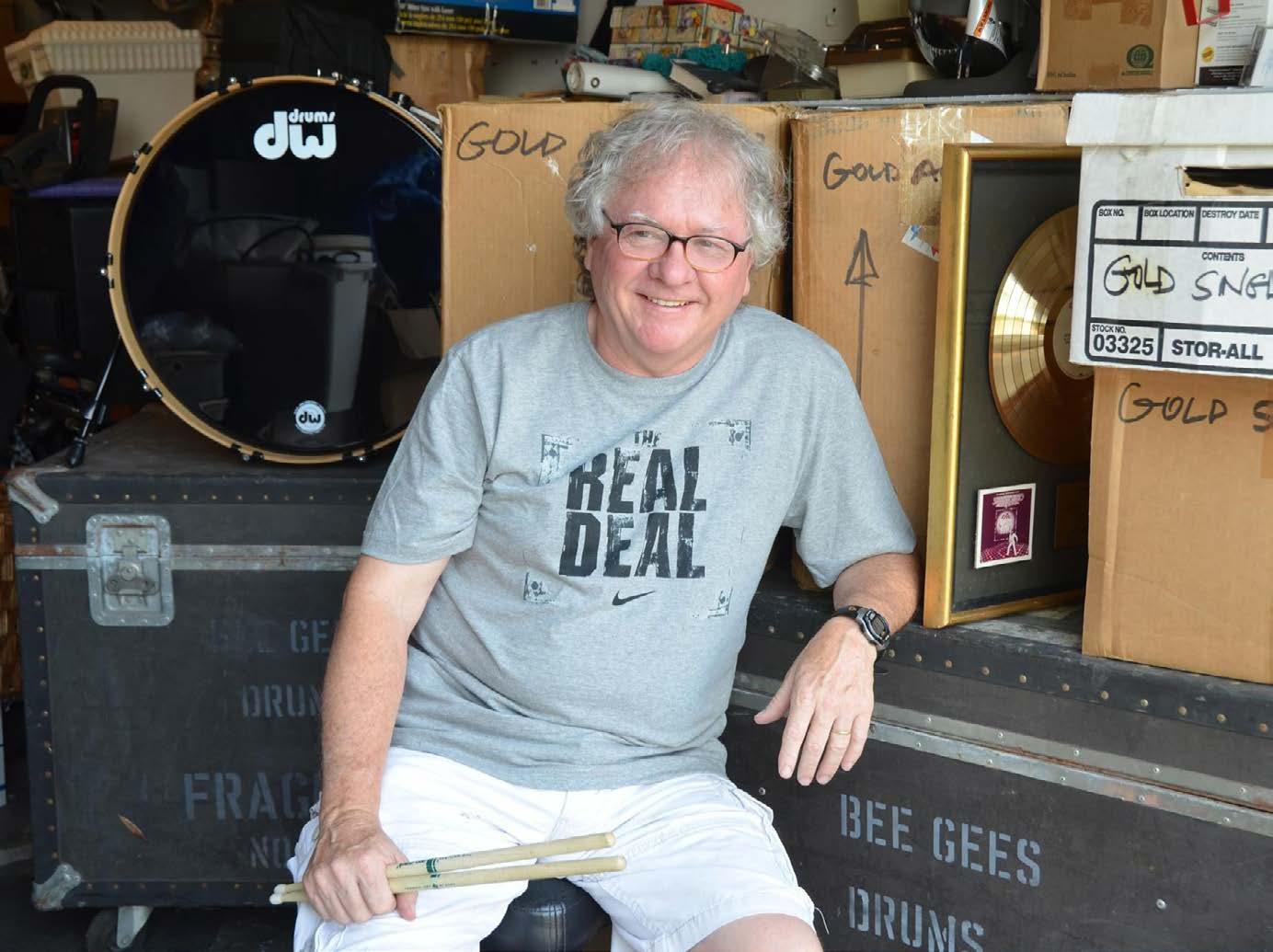
Hotter Than a Pepper Sprout. The true renaissance man also published three songbooks, and was an accomplished painter, sculptor, and woodworker. Wheeler received an honorary Doctor of Humane Letters degree from his two alma maters — Berea College in 2004, and Warren Wilson College in 2011.
Wheeler was inducted into the Songwriters Hall of Fame in 2001. He joined the West Virginia Music Hall of Fame in 2007, and the North Carolina Music Hall of Fame in 2011. Fellow West Virginia native and bluegrass artist Tim O’Brien talked about Wheeler’s journey.
“Bill Edd broke the established mold. Most musically inclined West Virginians headed south to Nashville to make a career, but Billy went east to college, where a liberal arts education inspired him to write not just songs, but also plays and novels, as well as to paint and sculpt. He made his songwriting reputation in New York City, and his songs were just as welcome in the folk and rock genres as they were in country,” O’Brien said.
Survivors include his wife of 61 years, Mary Bannerman Wheeler, one daughter, Lucy Wheeler; one son, Travis Wheeler; and one brother, Robert Stewart.
A memorial service was held Oct. 4 at Warren Wilson Presbyterian Church in Swannanoa, North Carolina.
April 14, 1949 — Nov. 14, 2024
Drummer Dennis Ronald Bryon, 75, died Nov. 14, 2024. He worked with the Bee Gees through the band’s superstardom in the ‘70s, with individual members of the band in later years, and with a host of other artists in the studio and in performance. He was a life member of the Nashville Musicians Association who joined Local 257 March 12, 1987.
Bryon was born in Cardiff, Wales, on April 14, 1949. He started playing drums at the age of 14, and cofounded the band Amen Corner when he was 17. The band had several hits in the U.K., beginning with “Gin House Blues” in 1967. Their biggest hit came in 1969 with “(If Paradise Is) Half as Nice,” which topped the U.K. chart.
“My style of playing is simple: R&B/groove. And my approach to recording is equally simple: Get out of the way, and let the song sing.”
— Dennis Bryon
After the breakup of the band, Bryon and the keyboard player, Blue Weaver, founded Fair Weather, which also saw success on the charts during the bands brief lifespan. Bryon joined the Bee Gees in 1973, and stayed with the band through the decade; he played on Mr. Natural, Main Course, Children of the World, and Spirits Having Flown, and played on the band’s contributions to the Saturday Night Fever soundtrack which was released in 1977.
Bryon moved to Nashville in the ‘80s, where he worked as a session player and continued to perform, working for a wide range of artists from Dionne Warwick and Barbra Streisand to Dave Edmunds, as well as an Italian Bee Gees tribute band.
Bryon talked about his approach to drumming in an essay written for Modern Drummer in 2015. “My style of playing is simple: R&B/groove. And my approach to recording is equally simple: Get out of the way, and let the song sing.”
He was the only drummer in pop history — besides Ringo Starr — to have five songs in the top ten on the Billboard Hot 100 chart simultaneously. Bryon’s memoir, You Should Be Dancing: My Life with the Bee Gees, was published in 2015.
He was also an established songwriter, and was half of the instrumental duo Strong & Bryon, which released several albums including Heart of the Ocean and Serene Noel.
Other artists Bryon has written, recorded, or performed with include Kenny Rogers, Jimi Hendrix, London Philharmonic Orchestra, Tony Joe White, Michael Snow, David Schnaufer, Melanie, Brian Willoughby, Catherine Craig, Bill Lloyd, and Steve Marriott.
Bryon was preceded in death by his first wife, Jenny. Survivors include his second wife and musical partner, Kayte Strong.
Feb. 10, 1944 — Dec. 19, 2024
Drummer, master architect, and professor Robert Austin Bealmear, 80, died Dec. 19, 2024. He was a passionate supporter of the Nashville jazz community, and a longtime columnist for The Nashville Musician. Bealmear was a life member of the Nashville Musicians Association who joined Local 257 Nov. 16, 1977.

He was born Feb. 10, 1944, in Tulsa, Oklahoma, to Henry Austin and Crystal Larue Bealmear. His father was a journalist who worked for the Associated Press, notably covering World War II for the news outlet. After graduation from high school, Bealmear attended Washington University in St. Louis, where he received his Bachelor and Master of Arts in Architecture.
He talked about his college days— which from early on were already becoming a mix of architecture and music — in an interview.
“We were in the drafting room from eight in the morning till two in the morning, eighteen hours a day. It was a very intense educational experience; we worked very hard, but we also played hard. Sometimes I’d slip out at night and go play a gig, and come straggling into the drafting room at one in the morning to finish my work. St. Louis had some great clubs though, and I was able to see some of the great names in jazz as they came through.”
Bealmear’s love of hosting musicians at his house may have developed during college, when he and his roommates convinced Thelonius Monk to come to a party at their apartment after the jazz great had played a gig in town that Bealmear and his roommates attended.
“We all went back to the apartment — this dimly-lit, linoleum-floored little place; one of our chairs was an ejection seat from an F-100 fighter plane – I don’t even know where we got that. The light fixture in the living room was a 19th-century surgical lamp, and we had painted our bathroom completely black…and here’s Monk in this crazy environment just hanging out with a bunch of students! He walked around the apartment with a glass of Coke in one hand and a glass of bourbon in the other.”
After graduation, Bealmear worked as an architect in St. Louis, Milwaukee, Chicago, New York, and Kansas City. He helped design a law school for Washington University, while he was working for a firm there in 1969. That year he also had the opportunity to help design an outdoor music festival.
“The St. Louis Symphony was looking for a summer home, and Southern Illinois University was looking for some kind of showpiece. They were a fairly new campus and wanted something that would draw attention, so we came up with this idea for a Mississippi River Festival. The St. Louis Symphony played there about once a week, and then the other nights of the week would feature music acts that were the headliners for that era. We had Janis Joplin, The Who, Chicago, the Eagles, Arlo Guthrie — it became a sort of local legend! We were in charge of the actual stage design, and we developed what we think was the first tune-able stage in the United States. You could literally tune the stage to project a particular sound for maximum
effect. We created a shell and an overhead made out of curved panels that you could reconfigure for each performance, to make each act sound better,” Bealmear said.
Bealmear taught design classes at several institutions, including O’More College of Design, Nashville State Community College, MTSU, and International Academy of Design and Technology. Comments he made in an interview about how to succeed in design, could easily be applied to other creative fields.
“In Indian culture there is a centuries-old education system in the Hindu tradition, of the guru or the teacher. You apprentice yourself completely to the guru; if he tells you to jump off a wall, you jump off the wall. You don’t question it or protest that you don’t want to do it. You totally give yourself over to following that vision, and in exchange, the guru promises to send you down the path you have chosen. By finding and following your guru, you can give yourself over totally to whatever you need to do. That is design education in a nutshell.”
Producer, arranger, and multi-instrumentalist Kevin Madill talked about his friendship with Bealmear.
“Jazz and Nashville did not have a better friend. RIP, my old friend.” — Kevin Madill
“A few months after I moved to Nashville in 1981, I moved in with Robert Austin Bealmear, or Austin, as everyone called him. I ended up living there for five years. He used an oversized dining room as a music room. Bands would rehearse there. If someone new moved to town, he would organize a jam session. Later on, he hosted Monday night jam session at JC’s jazz club…on top of everything else, he had an incredible jazz record collection. Jazz and Nashville did not have a better friend. RIP, my old friend,” Madill said.
Woodwind specialist Matt Davich also spoke about Bealmear’s love for jazz and musicians.
“A lot of us who came here in the late ‘70s and early ‘80s owe a debt of gratitude to Austin for introducing us to each other through his sessions at his home. And he certainly was so knowledgeable about the
“A lot of us … owe a debt of gratitude to Austin for introducing us to each other through his sessions at his home.”
— Matt Davich

recordings, personnel, and history of jazz artists, including many not so well-known. He had a great intellect and sense of humor,” Davich said.
Bassist Roy Vogt, another of Bealmear’s many friends and colleagues, talked about playing with Bealmear.
“I played with Austin with jazz saxophonist Jeff Kirk and keyboardist Dennis Borycki.
I also played with Austin for many years with Nashville jazz guitar institution John Richards; we made two albums for John, which also included Vassar Clements and Victor Wooten. We played Jazz Sundays at Cheekwood and the Belle Meade Mansion for the Tennessee Jazz and Blues Society, as well as at The Flying Saucer, Shanty’s
“He was a wonderful drummer, and very knowledgeable and passionate about jazz.”
— Roy Vogt
Seafood, the Gibson Cafe and many other venues. He also played with jazz vocalist Romy Smith and saxophonist Pattie Cossentino and I worked with him with those bands as well. He was a wonderful drummer, and very knowledgeable and passionate about jazz.”
Bealmear was a member of several organizations, including the Tennessee Jazz and Blues Society, the Percussive Arts Society, and the Nashville Film and Video Association.
Trombonist Bill Huber and Bealmear’s former wife Sandy Bealmear organized a celebration of life service, complete with a musical send-off. It was held April 27 at Local 257 in Cooper Hall.
Oct. 8, 1951 — Dec. 5, 2024
Trumpet player Joseph Gary Armstrong, 73, died Dec. 5, 2024. He was a longtime member of the Nashville Symphony Orchestra, and a life member of the Nashville Musicians Association who joined Local 257 July 21, 1980. In addition to trumpet, he played French horn and flugelhorn.
He was born Oct. 8, 1951, in Sheffield, Alabama, to George Joseph and Ruby Mae Armstrong, and began to play trumpet in grade school. After graduation from Sheffield High School, he attended Murray State, where he enjoyed playing in a Chicago

cover band called Clap Hands, Here Comes Charlie. After earning a Bachelor of Music in Music Education in 1972, he joined the U.S. Army and played for four years in the prestigious U.S. Army Band Pershing’s Own, in Washington, D.C., from 1973-76. While serving, he earned a Master of Music in Trumpet from Catholic University of America. In 1981 he completed his Doctor of Musical Arts in Trumpet, also from
continued on page 30
Catholic University of America. Armstrong also earned a Bachelor of Science degree in Computer Science from Middle Tennessee State University in 1985.
His professional career included performances with the Muscle Shoals Horns and multiple national and international tours with Lyle Lovett, Amy Grant, and Mr. Jack Daniels Original Silver Cornet Band. From 1987 to 2012, he was a member of the Nashville Symphony Orchestra. Violinist Laura Ross talked about working with Armstrong.
“Gary was such a dedicated musician and friend. He became a tenure-track member of the NSO just before the Nashville Symphony Association locked us out and filed for bankruptcy in 1988. For decades he served as 3rd trumpet — later as 3rd and assistant principal — and NSO
“Gary was such a dedicated musician and friend … I really miss him a lot.” — Laura Ross
personnel manager. That previous experience was crucial when he later served on the musicians’ negotiating team. He was also a wonderful father who brought his son John to sit with the trumpet section during rehearsals. Some of his proudest moments were seeing John join Local 257, become a Nashville Symphony sub, and win his position with the U.S. Navy’s Concert and Ceremonial Band. I really miss him a lot.”
Armstrong played recording sessions for a variety of artists, including Gregg Allman, Bobby “Blue” Bland, Johnnie Taylor, Hi Fi Killers, Etta James, Hank Crawford, Muscle Shoals Horns, Sandi Patty, Denise LaSalle, and Little Milton.
In addition to his parents, Armstrong was preceded in death by one sister, Carolyn A. O’Connor; and an infant brother. Survivors include his wife of 45 years, Beth; three daughters, Emily Isley, Ashley Armstrong, and Allison Rehborg; one son, John Armstrong; six grandchildren; and several cousins, nieces, and nephews.
A private graveside service was held Dec. 8 at Shields Cemetery in Waynesboro, Tennessee. Memorial donations may be made to a charity of choice.
Feb. 5, 1934 — Jan. 6, 2025

Keyboardist and singer Eddie Ray Seals, 90, died Jan. 6, 2025. Half of the longtime popular comedy duo Eddie and Joe, he was a 54-year life member of the AFM who joined Local 257 Feb. 18, 1970.
He was born in Gorman, Texas, Feb. 5, 1934, to Eugene Wayland and Clodell Lucille Ellison Seals. Seals came from a musical family — brothers Jim (Seals & Croft) and Dan were both also successful artists. His musical career was launched in 1945 when he formed a comedy duo with his friend Joe Sones. Seals was a drum major at Stephenville High School, and played saxophone. After graduation he attended Tarleton College, where he started a gospel quartet with Sones called the Rythmnaires. While playing piano in a dorm lobby, he met his future wife, Flora Carruth, whom he married in 1955.
While his partner was in the Army, Seals sang with a popular Texas gospel quartet called the Imperials. After Sones returned, he also joined the group, which then became the Commodores. On the strength of their hit “Riding on a Train” they made an appearance on the show Arthur Godfrey’s Talent Scouts, which they won. This led to tours with artists that included Harry James, Tennessee Ernie Ford, Eddie Fisher, Tex Ritter, Sonny James, and several others.
Upon their departure from the group, Eddie and Joe went back to comedy work, again performing as a duo at clubs in Lake Tahoe and other area venues. They released a single (“Everything’s Yellow”/”I’ll
Cry Tomorrow” ) on Hickory Records in 1967. In 1968 Seals moved to Nashville after getting a deal with Acuff Rose to record the duo. Eddie and Joe performed at various Music City venues, including Printers Alley and Opryland over the next 20 years. The duo also made many television appearances on programs such as The Porter Wagoner Show and That Nashville Music They also appeared on First Celebration of Country Comedy hosted by Mel Tillis and Minnie Pearl.
Seals, Sones, and their wives, built and operated Putter Place, a miniature golf course in Hendersonville that was popular in the ‘70s and ‘80s.
In addition to his parents, Seals was preceded in death by two brothers, Jimmy Eugene Seals and Danny Wayland Seals. Survivors include his wife of 69 years, Flora “Flo” Ann Seals; one son, Jay Ray Seals, two daughters, Kay Ann Nemitz and Gay Lyn Collett; five grandchildren; numerous great grandchildren, great-great grandchildren, and a host of nieces and nephews. Services were held at Hendersonville Memory Gardens in Hendersonville, Tennessee, Jan. 9, with interment following.
July 25, 1935 — Nov. 17, 2024
Lonnie George Hoppers, 89, died Nov. 17, 2024. He was a banjo player who worked with many bluegrass artists, including Bill Monroe. Hoppers was a life member of the American Federation of Musicians who joined Nov. 3, 1962. In addition to banjo, he played guitar and bass.
He was born July 25, 1935, in Goodson, Missouri, to the late Aubra George and Opal Irene Franklin Hoppers, and grew up near Urbana, Missouri. Hoppers began playing banjo when he was 14, and started playing professionally at 17, when he became a member of the Ozark Opry at the Land of the Ozarks. After graduation from Urbana High School, Hoppers was drafted into the United States Army. During his time in the Army, he married Charlene Carson. After his two years of service, he joined Bill Monroe as one of the Bluegrass Boys. Hoppers recorded 12 songs with Monroe, including “Baker’s Breakdown,” “I’ll Meet You in Church Sunday Morning,” and “Big Sandy River.”

Hoppers moved to Kansas City, Missouri, after leaving the Monroe band, and began performing with a guitarist named Dan Crary. The two were known for playing a unique style of bluegrass, and worked in the Midwest for about a decade. Hoppers returned to the Ozarks in 1978, where he played many theaters in the Branson area. He also performed in movies and TV shows made locally. Hoppers released a solo banjo record in 1982 titled Pickin’ for Fun, on the Dungeon label, and formed his own group, Lonnie Hoppers & New Union in 1984. A reunion with Crary in 2000 produced a one-off record, Lonnie Hoppers, Dan Crary and their All-American Band, for Pinecastle Records. Hoppers was inducted into the Kentucky Colonels in 2002, and
was a longtime member of the Urbana First Baptist Church.
Hoppers was preceded in death by his parents; and one sister, Evelyn. He was survived by his wife of 65 years, Charlene; one daughter, Lorrie Cobb; two grandchildren; two great-grandchildren; one brother, Danny Hoppers; and numerous nieces, nephews, other family members, and many friends.
Graveside services were held Nov. 22 at the Pleasant Ridge Cemetery in Urbana, with Pastor Ryan Pendergraft officiating. Escorts were Zane Hoppers, Oliver Hillman, Michael Hoppers, Carson Trimble, Jeff Hillman, and Ben Hillman. Honorary escorts were Bob Lovett and Greg Harmon. Memorials may be made to Hickory County Cares.
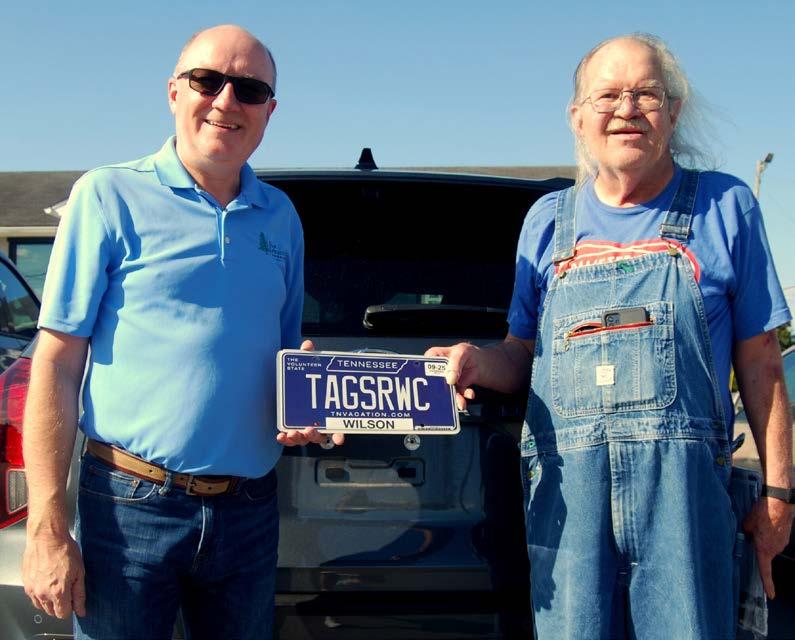
RUSSELL FRED ELROD
July 19, 1951 — Dec. 20, 2024
Keyboardist Russell Fred Elrod, 73, died Dec. 20, 2024. He was a life member of the Nashville Musicians Association who joined Local 257 Nov. 7, 1983.
He was born July 19, 1951, in Chattanooga, Tennessee, to Fred and Jean Elrod. His father sang in gospel quartets, and both of his sons were singers as well. Elrod also learned to play piano, and after graduation from East Ridge High School in Chattanooga, he studied music at UT at Chattanooga. He played with several bands in college, and then moved to Atlanta, Georgia, where he played with popular local band Tristan for several years.
He moved to Nashville in 1981 to further his career. Elrod went on to play keyboards for several acts including Vern Gosdin, the Gatlin Brothers, Dave & Sugar, and Eddy Raven. After a seven-year run with Raven, Elrod joined The Four Guys, longstanding performers on the Grand Ole

Opry. He played with the group until retirement. Elrod was also a passionate fan of The Andy Griffith Show, and made the local news last October when he passed his vanity license plate TAGSRWC ( The Andy Griffith Show Rerun Watching Club) to another huge fan and club member, Lebanon mayor Rick Bell. Elrod had displayed the plate on his vehicle for over 20 years.
Friends and family remembered him not only for his musical talent, but for his intellect and kindness to others.
Elrod was preceded in death by his parents. Survivors include his wife of 23 years, Claudia Thetford Elrod; one brother, Richard Elrod; and two nieces. A celebration of life was held April 26 at JB’s Pour House in Hermitage, Tennessee.
Jan. 8, 1945 — Dec. 29, 2024
Guitarist Patrick Richard “Rick” Harper, 79, died Dec. 29, 2024. He was a longtime guitarist for Kenny Rogers, and a life member of the Nashville Musicians Association. Harper joined Local 257 April 18, 1977.
He was born Jan. 8, 1945, in Chicago, Illinois, the son of Constance Kurdelski Fletcher and Harry Patrick Harper. His father taught him how to play banjo and guitar, and they began to perform together when he was 12. Harper’s first professional band was called the Riddles. The group played frequently in the Chicago area, released a record on the Mercury label, and appeared weekly on a local TV show. Harper also taught guitar at the Roselle School of Music. After the band broke up, he moved to Nashville to pursue a career in music.
He soon had a full-time gig touring with Rogers, which would span the next 23 years. Harper also played on several of Rogers’ albums, including The Gambler and Kenny. He retired from the road in 2000. After Harper’s passing, the Kenny Rogers organization posted their condolences and commented on the significant role the guitarist played in Rogers’ sound.
In addition to his parents, Harper was preceded in death by Glenn L. Fletcher; one brother, Greg Harper; and one sister, Barb Henkel.
Survivors include his wife Karen Wingate Harper; one daughter, Amanda Harper Fink; one son, Austin Jared Harper; one brother, Steve Harper; two sisters, Sheila Harper Barnhart and Cindy Harper Heimerl; and many nieces and nephews.
A celebration of life service was held Jan. 9, 2025, at Harpeth Hills Memory Gardens in Nashville, Tennessee, followed by interment. The family wishes to extend thanks to Harper’s doctors and the staff of Alive Hospice for the care provided. Memorials may be made to MusiCares or Alive Hospice in Nashville.
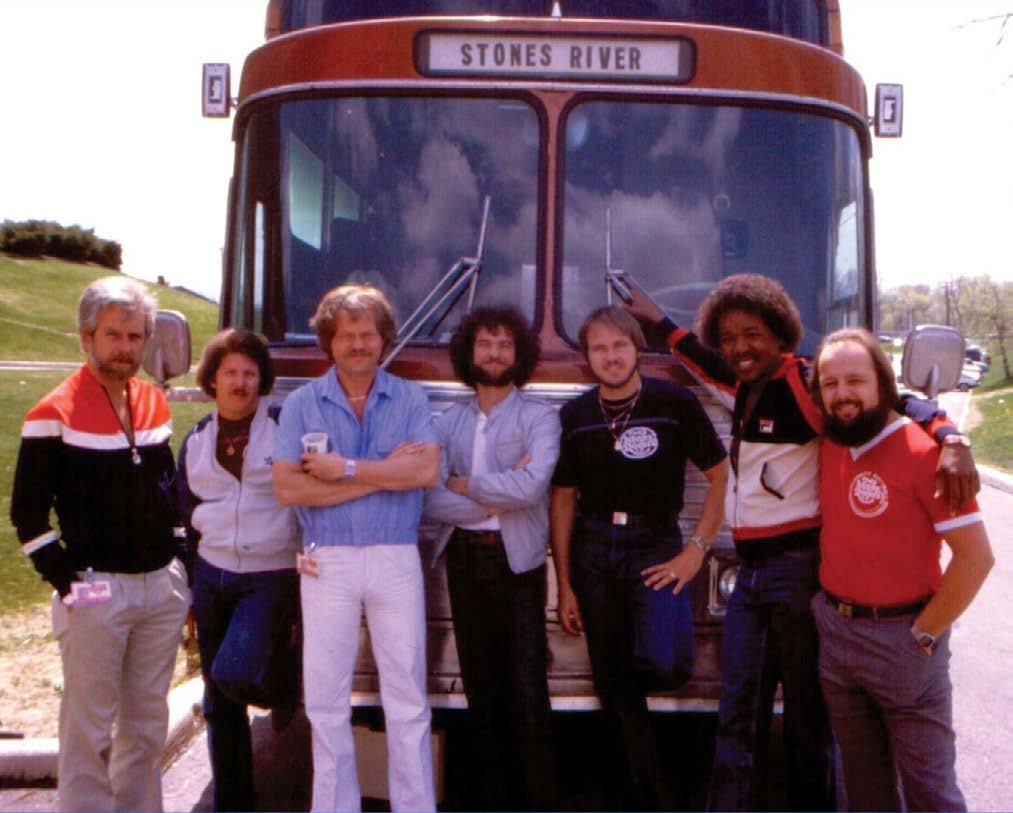
The Kenny Rogers band, Bloodline, Circa 1980s (l-r) Steve Glassmeyer, Gene Golden, Rick Harper, Edgar Struble, Randy Dorman, Bobby Daniels, & Chuck Jacobs.

IN MEMORIAM The officers, staff and members of Local 257 extend our deepest sympathies to the families and friends of our members who have recently passed away. You are in our thoughts, hearts and prayers.
Ralph Everitt Black
Jerry Wayne Braswell
David P Briggs
Albert Wayne Butler
John T Herbert
Raymond E Huffmaster
Charles A Jennings
James Lester Jordan
Timothy Mark Smith
Drew Thomas


The “Do Not Work For” list exists to warn our members, other musicians and the general public about employers who, according to our records, owe players money and/or pension, have failed to sign the AFM signatory documents required to make the appropriate pension contribution, or are soliciting union members to do nonunion work. When you work without the protection of an AFM contract, you are being denied all of your intellectual property rights, as well as pension and health care contributions.
Tommy Sims dba Positive Movement
Sims remains in contempt of court judgements from 2012 and 2022. He still owes more than $300K to musicians from a 2008 gospel project. Despite making many promises he has only paid a fraction of his debt, and continues to avoid responsibility.
Nashville Music Scoring/Alan Umstead – solicitation and contracting nonunion scoring sessions for TV, film and video games. Musicians who work for them without an AFM contract are being denied appropriate wages and all intellectual property rights.
Electronic Arts/Steve Schnur – commissioning and promoting nonunion videogame sessions and exploiting musicians' intellectual property for his own gain.
These are employers who owe musicians money and have thus far refused to fulfill their contractual and ethical obligations to Local 257 musicians.
• Terry K. Johnson/ 1720 Entertainment (unpaid contracts/unauthorized sales –Jamie O’Neal project)
• Revelator/Gregg Brown (multiple bounced checks/unpaid contracts)
• Eric Legg & Tracey Legg (multiple unpaid contracts)
• Ray Vega/Casa Vega
• Quarterback/G Force/Doug Anderson
• Rust Records/Ken Cooper (unpaid contracts and pension)
• HonkyTone Records – Debbie Randle (multiple unpaid contracts/pension)
• Mike Barrios (unpaid live performance wages)

Membership Meeting Wednesday, June 11 Zoom and at Local 257
UNPAID CONTRACTS AND PENSION
Knight Brothers/Harold, Dean, Danny & Curtis Knight
River County Band/SVC Entertainment (unpaid demo conversion/pension)
UNPAID PENSION ONLY
Comsource Media/Tommy Holland
Conchita Leeflang/Chris Sevier
Ricky D. Cook
FJH Enterprises
Matthew Flinchum dba Resilient
Jeffrey Green/Cahernzcole House
Randy Hatchett
Missionary Music
Jason Morales (pension/demo signature)
OTB Publishing (pension/demo signature)
Tebey Ottoh
Ride N High Records
Jason Sturgeon Music
AFM NON-SIGNATORY
PHONO LIST
We do not have signatory paperwork from the following employers — pension may have been paid in some cases, but cannot be credited to the proper musicians without a signatory agreement in place. If you can provide us with current contact info for these people, we will make sure you get your proper pension contribution for your work.
Heaven Productions
Stonebridge Station Entertainment
Collective
If you have a problem with an employer, whether it’s nonpayment, slow payment, failure to sign a signatory agreement, or another issue — let us know.


